- Beatle people
- John Lennon

John Lennon biography
John Winston Lennon was born in Liverpool on 9 October 1940 . A founder member of The Beatles, and their singer, songwriter and guitarist, he was murdered in New York City on 8 December 1980.
The early years
Julia Lennon taught her son to play the banjo, and they shared a love of Elvis Presley’s music. The first song he learned to play was Fats Domino’s ‘Ain’t That A Shame’.
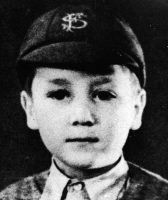
In 1957 she bought John his first guitar, a Gallotone Champion acoustic “guaranteed not to split”. Julia ensured it was delivered to her house rather than Mimi’s, as her sister was disapproving of music. She told her nephew, “The guitar’s all very well, John, but you’ll never make a living out of it”.
Lennon’s first school was Mosspits Lane Infants School in Wavertree, Liverpool, which he attended from November 1945 to May 1946. He then changed to Dovedale Primary School, and upon passing his 11 Plus attended Quarry Bank Grammar School (1952-1957). He formed The Quarrymen in March 1957, and in July the same year met Paul McCartney at the garden fete at St Peter’s Church in Woolton, Liverpool.
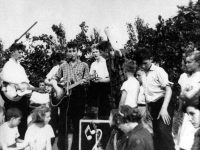
The pair quickly bonded, and began rehearsing and writing songs together at McCartney’s home at 20 Forthlin Road. Lennon’s first completed song was ‘Hello Little Girl’ , later a hit for the Fourmost. McCartney also introduced Lennon to George Harrison , and convinced him to let the young guitarist join the group, eventually named The Beatles after a series of other names were rejected.
We all looked up to John. He was older and he was very much the leader – he was the quickest wit and the smartest and all that kind of thing.
Lennon failed all his GCE O level exams, but with the help of his head teacher was accepted into the Liverpool College of Art. There he met Cynthia Powell , who became his first wife. They married after she became pregnant with their son Julian, who was born on 8 April 1963 .
With The Beatles
An unruly pupil, Lennon dropped out of college before his final year. By this time, however, The Beatles were working hard to establish a name for themselves. Initially managed by Allan Williams from May 1960, they were booked later that year to play at the Indra club in Hamburg. The trip wasn’t a success: McCartney and drummer Pete Best were accused of arson after a fire started in the cinema where they were staying, and George Harrison was deported for working while under the age of 18. Lennon returned to Liverpool after his work permit was revoked.

The Beatles returned to Hamburg after Harrison turned 18, and from April 1961 began another residency. While there they recorded ‘My Bonnie’ with singer Tony Sheridan .
In 1962 they returned to Hamburg to play at the Star Club, and in May were signed to EMI subsidiary label Parlophone. Their first single, ‘Love Me Do’ , was released on 5 October.
By the following year The Beatles had become a worldwide phenomenon, under the auspices of manager Brian Epstein . Their success looked unstoppable, though in March 1966 Lennon was interviewed by journalist Maureen Cleave, who quoted him as saying:
Christianity will go. It will vanish and shrink. I do not know what will go first, rock ‘n’ roll or Christianity. We’re more popular than Jesus now . Jesus was all right, but his disciples were thick and ordinary.
The quote led to protests in the southern and midwest US states, which included public bonfires of Beatles records and memorabilia. Lennon issued an apology of sorts at a Chicago press conference in August 1966, saying:
I was not saying whatever they’re saying I was saying. I’m sorry I said it really. I never meant it to be a lousy anti-religious thing. I apologise if that will make you happy. I still do not know quite what I’ve done. I’ve tried to tell you what I did do, but if you want me to apologise, if that will make you happy, then OK, I’m sorry.
By this time The Beatles had long tired of the demands of Beatlemania and the frenetic pace of touring. Lennon later wrote:
I always remember to thank Jesus for the end of my touring days; if I hadn’t said that The Beatles were ‘bigger than Jesus’ and upset the very Christian Ku Klux Klan, well, Lord, I might still be up there with all the other performing fleas! God bless America. Thank you, Jesus.
Latest Comments
John was one of the best musicians of all time, possibly the best, certainly a genius.
The greatness of John Lennon as i see it:
–The increasing tension. For example I Should Have Known Better. Before Lennon, all pop music structure was AABA, where the tension decreased in the middle part B. But with Lennon the tension from the verse continued in the middle part. Besides that, in this song it is not only a key change in the transition to the middle part, it is even a little key change in it. The increasing tension was what first characterized The Beatles. The first single where the verse lacked this increasing tension was Can´t Buy Me Love. (But the chorus is OK). I didn´t know then it was a McCartney composition. – Other ways of increase the tension by Lennon is to pack together several little songs. Happiness Is A Warm Gun consists of three or four songs, and Bring On The Lucie consists of three songs. –All You Need Is Love has another way: First talking, then repeating half singing, then singing, and finally the climax in chorus. –The melody does not changes, but the background. For example in Strawberry Fields Forever and in Julia the singing melody uses the same notes, but instead the accompaniment changes! Listen to Puccini. He got tired of his sang melodies in Boheme and in Tosca he composed a lot where the sang melodies are often on the same notes, but the background changes instead. The effect can be stronger. –Octave Leap. For example, in the middle part of Please Please Me, Lennon makes an octave run in “…it´s so hard to reason with YOU…”, the climax of the song. George Martin didn´t understand the quality in that. In his orchestration of it in Off The Beatle Track, Martin excludes the octave, the most important bit of the song! –Verse and resolve. Typical for Lennon is a melody followed by a resolve, for example in No Reply “…I saw the light!”…and in Girl “girl! girl!…”. Lennon said that “a good song must have climax and resolve”. –Only one chord. In Tomorrow Never Knows there is only one chord, or bass note, an innovation in pop music. In the Middle Ages it was common with that bordun note, an unchanged bass note. When Lennon played the song the first time for George Martin, Martin didn´t like it. –Whole-tone scale. Most scales have both whole step and half steps between the notes in an octave. In the verse in Norwegian Wood, there is most whole steps, and that´s like the impressionists, for example Debussy. It sounds very clean. –Church Modes. A Hard Day´s Night is written in the mixolydian mode, an ancient vocal scale, preserved in British, Irish and American folk song. –If you play the beginning of Please Please Me slowly, you can hear the similarities with the Westminster bells ringing. When Lennon was a little boy, he loved visiting the divine services. Afterwards he used to improvise anthem music. Westminster bells could unconsciously have inspired him to the beginning of Please Please Me. There is also anthem music in the beginning of All You Need Is Love: “love love love…”. –The lamentation second. A little half step up in the scale. And that´s to indicate a pain. In All You Need Is Love Lennon sings the refrain twice unchanged and then suddenly the third time, rises a little, a very expressive and important step up. That step up started in the baroque epoch, and was called The lamentation second. When Lennon played it the first time to George Martin, Martin didn´t like it. He leaned towards McCartney and muttered: “It´s certainly repetitive”. –From darkness to light. Happiness Is a Warm Gun starts with a little melancholy, and ends with enthusiasm.—In the middle part of I Am The Walrus the darkness switches over to light: “sitting in an English garden…”. And the transition from the chaos and darkness in Revolution 9 to the light in Good Night. That is very typical in Wagner´s music. I think that temperamentally the two were similar. And I think Wagner would have loved the arrangement in Glass Onion. –Suggestive and hypnotic music. With small intervals between the notes in combination with some dissonance chord, Lennon can create a suggestive and hypnotic feeling in for example Across The Universe. It is more like Wagner than pop music. –Few notes. With few, but effective notes, Lennon can create more feeling than McCartney with all his notes, for example in If I Fell and Love. –A melody sang three times, in succession, with just a little change every time. When you hear it you can get frustrated or desperate not getting out from the melody. That we have in the middle part in I Call Your Name and in the middle part in And Your Bird Can Sing. And at the same time the melodies are stick together with a countermelody at the guitar. Rather hypnotic
get a life u spent way tooooooo much time on this
When does healthy admiration become obsession?
Live and let live. This man is happy writing what he wrote, and his chosen subject was a brilliant choice: the musical genius and founder of the Beatles, John Lennon. YOU are the one who needs to get his own life.
Wrong , Tony. Johan spends a great deal of his time throughout these blogs with his obsessive love of Lennon and obsessive ignorance/hate of McCartney, this with opinions and self-created thoughts presented as fact with no corroborating sources or quotes. Johan is indeed in need of a life; dog and Robert (particularly) know of what they speak.
Thank you Mike.
Is there a problem with someone wanting to inform other people of famous people? I think it is interesting
beautiful, are you a writer?
Thank you. I am not a writer. I just happened to be paralyzed when I heard Please Please Me and Do You Want To Know a Secret the first time.
John Lennon will never die.
Much of pop and rock music, including heavy metal, is written in the mixolydian mode. As for the rest, you have mischievously selected aspects of music theory to suit your argument. I’m not fooled and I suspect many others aren’t either.
From what I can gather a lot of what makes John Lennon’s Beatle songs musically interesting comes from Paul Mccartney’s involvement (Tomorrow Never Knows, Come Together, A Day in the Life). This is made clear when you look at their solo works.
If you want to talk about Lennon’s genius talk about his lyrics, which flow wonderfully and are full of wonderful imagery. Across the Universe is the best example of this and might very well be Lennon’s best work (it’s also my favorite Beatles song, which is amazing since Paul is my favorite Beatle not John).
I agree! I love John Lennon
When John is still living, I always wish for a Beatles reunion. The day John Lennon died, my wish & hope for their reunion also died. 🙁
All I can say is that it still breaks my heart to know John is no longer here. I was 17 when he was senselessly murdered. I can still remember it like it was yesterday. John is the best musician ever, sadly we only got a small sample of his work. He is so greatly missed by so many. We will always have you in our hearts and mind through your creativity. I so glad you were with us as long as you were.
You forgot to mention the family home before he moved in with his aunt Mimi. He originally lived at 9 Newcastle Road, Wavertree when he was a little boy.
That insect that took him away from his family,friends and us should never be mentioned by name.Throw him on the dustbin of history,that useless git.
May the Lord Jesus, bless and keep your family and friends. I feel your pain. I suppose John had finished his course here on earth, so let’s look forward to seeing him there.
John said this out of pure honesty. At the time, The Beatles were bigger than Jesus.
I think Plastic Ono Band is one of the best albums ever. Someone at the height of his fame exposing his vulnerabilities and pain. Remarkable.
I read some where that the night that John got shot Yoko said to the doctors or the news reporters that she didn’t want to announce his death on the tv right away because she said Sean was in front of it.
If you were here today… …you’d love CD’s, email, and trolling on the Internet. Miss you, John. 🙂
that hurt more than it should have
He was controversial yet spiritual. Many never understood him. People misunderstood his words. He would use power of communication to read people. This is partly what resulted to his shooting. He knew folks hated him anyway.
He was an amazing singer. I saw John ,Paul, George and Ringo 1966 in Essen/ Germany. I will never forget the concert, when i was sixteen!!!
John was a true genius. However his most blatant act of stupidity was when he took up with Yoko. I still blame her for being one of the primary reasons for him wanting to leave the Beatles. It’s still a head scratcher to me why he was attracted to her. She had no real talent, she sang like a cat getting it’s tail pulled, her looks were a 2 on a scale of 1-10, and she was dumb as a stump. I will always believe that she somehow brainwashed him.
True. As George Michael sang: “turn a different corner and we never would have met.” I,too, wish John had turned a different corner. He might even still be alive.
I have been a Beatles fan all my life. There music was what helped me when I was growing up. John Lennon will always be a hero to me and I’ll be forever grateful for all of them in my life!
Well, Ono was from a wealthy family and as for her being all those great things you have mentioned….you are probably righ…Japan has the worst bands ever becoming famous just because Japanese tend to like crappy music.
Whatever or whoever Yoko might be, we should respect her simply because John respected her, and she probably saved him from dying of an OD in 69/70. However, her role in the murder is equivocal, and she couldn’t save him from Ronald Reagan’s minions. I agree with Paul, the assassin’s name should be forgotten, he was just a tool.
Ronald Reagans minions? Really, Manteau? Politics has no place here but if you really want to do this I’m game.
This site is intended to celebrate the Beatles’ legacy, which really centers around intimate and universal love. What ironic heartbreak that the comment section is soiled by haters and goons.
John Lennon was probably the most brilliant and prolific music composer of the 20th century. With that brilliance comes a certain inability to relate much as Edison, Tesla and Einstein had difficulty relating. They all shared the commonality of being misunderstood. The man was genius and should there be any doubt look at what he has written and its social impact. He and the rest of the Beatles changed the face of music forever.
I like John Lennon, but the most brilliant and prolific composer of the 20th century is probably George Gershwin (discounting classical music) and I would rank Cole Porter, Bob Dylan, and several others above John Lennon.
Yeah, but let’s hear those other composers sing! On several occasions when I have attended a wedding what song did they play? Not Porter, Dylan, Gershwin or McCartney! John Lennon’s Grow Old With Me.
you are right
Dear Warptek, John had been an fervent supporter of Jimi Carter back in 1976., He had been an undesirable alien in the US of A from 1972 to 1975, when he eventually was granted his green card. He had won…too easily against a disgraced Nixon. In the meantime, John had nothing to fear from Carter’s team. But in November 1980, two things happened almost at the same time : The election of Ronald Reagan and John’s own return to the forefront of the pop*rock scene. You know what happened. Now, if you say politics are a forbidden subject here, we should never talk about John at all! I hate politics, but I’m convinced ( Like Sean ) that John Lennon’s assassination was a political one.
In November of 1980, two things happened almost at the same time: John’s return to the forefront of the pop*rock scene and the “Who Shot JR” episode of Dallas. You know what happened …
he was a really good friend of mine
I noticed a mistake and would like to correct it politely. John’s first school was actually Mosspits County Primary School. He was expelled in 1946 for misbehaviour and then enrolled in Dovedale Road Primary School. My source is ‘An Intimate Day by Day History’ by Barry Miles.
Time really works for Lennon. His compositions can age better.The tendency in later years in the voting of The Beatles best 20 songs, Lennon´s compositions always are dominating, with for example: –Strawberry Fields Forever, –Come Together, –Don´t let Me Down, –I Am The Walrus, –Revolution, –A Day In The Life, –Help, — Rain, –All You Need Is Love and don´t forget Hey Bulldog, a song that George Martin and McCartney stopped being released as single! and now there is a long story of that classic Lennon song in You Tube!! Today Harrison´s songs Something, While My Guitar Weeps and Here Comes The Sun are equally popular as McCartney´s most popular songs!! And Lennon´s solo songs are today more played than McCartney´s, for example: –Jealous Guy, –Imagine, –Woman, – –Instant Karma, –Give peace a Chance, –Love, –A Working Class Hero, –Grow Old With Me (on weddings nowadays). This Lennon´s success is despite George Martin´s always patronizing of him. George Martin preferred McCartney´s conventional and “vertical” melodies.
I don’t know why people persist in describing John’s upbringing as harrowing or tragic. After WW2 there were many children of John’s age, taken from institutions in Liverpool and from dysfunctional family situations, babies to teenagers, who were shipped off to the white commonwealth countries for a supposedly better life. While many did get this, others were horribly abused, physically, sexually, and mentally in foster homes and catholic institutions. Some of these people from John’s generation grew up so psychologically damaged they were institutionalised for the rest of their lives. The rest grew up effectively stateless and denied British citizenship to return to their place of birth and their families. It was years before they received any compensation from the British government and is one of the most shameful episodes in post war British history. John Lennon had a lucky escape. He came from a broken home and that was extremely sad but he was raised by people who loved and protected him and provided the best for him that they could. He grew up to be an angry young songwriter, no doubt about it, but I sometimes sensed that John himself was gaining perspective with increasing maturity before he was senselessly murdered.
In the praised film about The Beatles Eight Days A Week by Ron Howard from 2016, Lennon´s songs are dominating: Please Please Me, You Can´t Do That, A Hard Day´s Night, If I Fell, Help, Ticket to Ride, It´s Only Love, Day Tripper, I´m A Looser, Girl, Norwegian Wood, Nowhere Man, I´m Only Sleeping, Tomorrow Never Knows, Don´t Let Me Down. When they took up the recording of Sgt Pepper, they played Strawberry Fields Forever, Lucy In The Sky With Diamonds and A Day In The Life, no other songs from that album,but at the same time there is a big picture of McCartney.(formerly a very common typical situation).
There’s a fine line between healthy admiration and worrisome obsession as another commentator indicated here.
Without McCartney, there would’ve been no Lennon. And vice-versa. Said and done – concisely and simply.
Johan-Thank you once again for your willingness to praise John to the heavens and criticize Paul to no end. Your opinion and you are entitled to it. But, it’s old and repetitive and boring. The Beatles were John, Paul, George and Ringo. Not just John and not just Paul. You will never be objective when it comes to this topic but you will always be a bore. Merry Christmas.
The burden that lies upon a genius’ shoulder is that in spite of the freedom in ways of living, he is driven by an unconcscious and mysterious god within himself. Certain notions and ideas come to him – not knowing where from, not knowing that something within himself is driving him to create and he does not know to what purpouse these notions have. The artist, just like the genius is in a battle between these unconscious urges and the comfort and safety which all humans strive for. For that reason the life of a genius, so often ends in tragedy.
This is, in my opninion, of the upmost truth in the case of John Lennon. His nonchalant attitude when asked about his songwriting, may suggest that he himself, is not even aware of these urges. He suggests that he’s merely “putting words together”. However, the lyrical components of songs such as Strawberry Fields Forever and Across The Universe prove to me that John, was in some sense a higher being. His mind was able to grasp certain aspects that lie in the unconscious of all human beings.
This man was extraordinary, and to me the greatest artist to ever live.
john lennon is the bet singer songwriter of all the time
I was 10 years old when he died I was such a Beatles nerd but that ended when he died.
In the twelve month period from November 1966, John Lennon wrote five of the greatest songs ever – Strawberry Fields, Lucy in the Sky With Diamonds, A Day in the Life, All You Need is Love and I am the Walrus. Who else is comparable?
Leave a Reply

Biography Online

Biography John Lennon
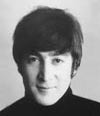
“If someone thinks that love and peace is a cliché that must have been left behind in the Sixties, that’s his problem. Love and peace are eternal.”
– John Lennon
Short Biography of John Lennon
John Lennon was born, October 1940, during a German air raid in Oxford Street Maternity hospital, Liverpool. During his childhood, he saw little of his father Freddie, who went AWOL whilst serving in the navy. For several years, John was brought up by his mother’s sister Mimi.
In his early years, John was a mischievous student, who would be quick to take the mickey out of teachers and other students. His school reports were often scathing. “ Certainly on the road to failure … hopeless … rather a clown in class … wasting other pupils’ time. ”
Whilst in his early teens he got his first guitar and would spend many hours playing. His aunt Mimi used to regularly say:
“The guitar’s all very well, John, but you’ll never make a living out of it.”
After the Beatles were famous, John presented Mimi with a silver platter with this quote written on. He failed all his O-Levels but was still accepted to the Liverpool College of Art. However, he was expelled from College before his final year because of his disruptive behaviour.
In the late 1950s, John formed a rock group called the “Quarry Men Skiffle Band”, which was a precursor to the Beatles. In 1957, he met and formed a successful musical partnership with Paul McCartney . They complemented each other very well. Lennon focused on the more satirical aspects and McCartney veered towards the more optimistic cheerful qualities. Lennon was considered the leader of the Beatles, due to his superior age and also his musical abilities. It was, however, McCartney who persuaded Lennon to allow George Harrison to enter the band as lead guitarist.
The first concert of the Beatles was at the Cavern Club in Liverpool on 21st March 1961. After being rejected by many music labels, they eventually signed an agreement with Parlophone in 1962. George Martin who was responsible for signing the Beatles, later said he was not particularly impressed by their demo tapes, but liked their wit and humour – of which Lennon was usually at the forefront.
During the great success of the Beatles during the 1960s, John Lennon would often be seen as the figurehead for the group, although they maintained that the decisions of the group were democratic.
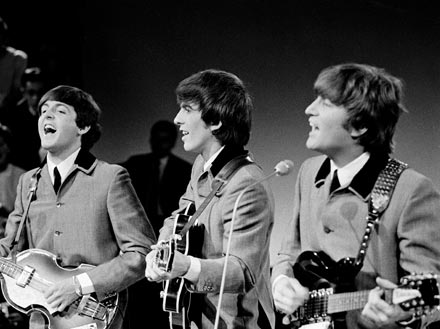
Paul, George and John Lennon
In 1961, the Beatles travelled to Germany, where they played many concerts in Hamburg. After two successful years, they returned to England and concentrated on recording singles. In 1963, the group’s profile took off with hit singles, such as “Please Please Me” and “She Loves You.” The popularity and enthusiasm for the Beatles were such that it led to the term “Beatlemania” being used. Lennon and the Beatles began a hectic schedule of recording, live performances and media appearances.
Despite his natural rebelliousness, Lennon agreed to the suggestion of manager Brian Epstein to dress smartly and have a similar haircut. In the early years of the Beatles, the smart-suited Beatles were part of their cultivated image.
In 1964, they released the single “ I Want to Hold Your Hand ” – it entered the US charts in early 1964 and soon sold over two million copies. Beatlemania was now a global phenomenon. It marked a shift in musical attitudes, especially in the US. The Beatles success of 1964, was known as the start of the “British Invasion”. In 1964, they toured the US for the first time, and in February appeared on the Ed Sullivan tv show.
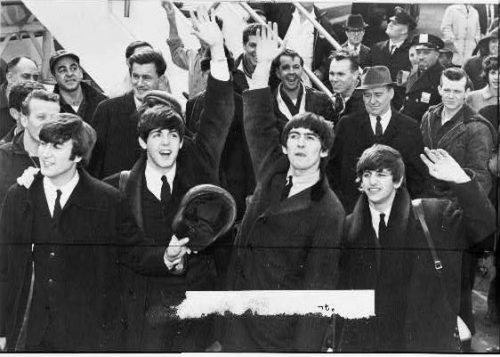
The Beatles in 1964, JFK airport US.
John Lennon was no stranger to controversy. In 1966, he made an off the cuff remark in an interview with the Evening Standard.
“Christianity will go. It will vanish and shrink … We’re more popular than Jesus now—I don’t know which will go first, rock and roll or Christianity.”
He claimed this was a mere observation, which was probably true in England. Nevertheless, it led to a boycott in the US, especially in the deep south. There was also a wave of record burnings – although Lennon wryly remarked that to burn them they had to buy them first.
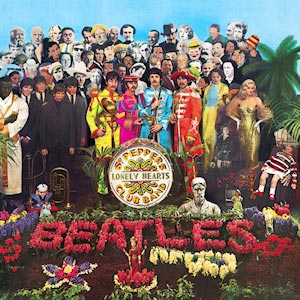
John Lennon and Meditation
In 1967, John Lennon and the Beatles became more interested in meditation and Eastern religions. They spent several weeks in the ashram of Maharishi Mahesh Yogi . Although John later broke ties with the organisation, he continued to advocate meditation.
“I believe in God, but not as one thing, not as an old man in the sky. I believe that what people call God is something in all of us. I believe that what Jesus and Mohammed and Buddha and all the rest said was right. It’s just that the translations have gone wrong.”
“I’m not a god or the God, but we’re all God and we’re all potentially divine — and potentially evil. We all have everything within us and the Kingdom of Heaven is nigh and within us, and if you look hard enough you’ll see it.”
– John Lennon, The Beatles Anthology (2000)
In India, they composed music for their albums The Beatles and Abbey Road . The visit also saw more Eastern musical influences begin to percolate into their music.
John Lennon Solo Career
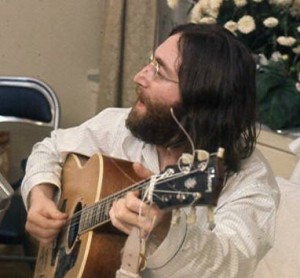
John Lennon by Roy Kerwood
In 1969, the Beatles started to split up; Lennon was keen to branch out musically and develop his own solo career. There were also frictions over the presence of his wife, Yoko Ono in the Beatles recording sessions. After the break-up of the Beatles, Lennon pursued a very successful solo career. His first album was released in 1970 with John Lennon/Plastic Ono Band (1970).
“It was just a gradual development over the years. Last year was “All You Need Is Love.” This year it’s “Give Peace a Chance.” Remember love. The only hope for any of us is peace…. Get out there and get peace. Think peace, live peace, and breathe peace and you’ll get it as soon as you like.” (Statement to the press, July 1969)
In the early 1970s, John Lennon also became a figurehead for those opposed to the Vietnam War. His song “ Give Peace a Chance ” became an anthem for the anti-war movement. Due to his anti-war stance, the Nixon administration tried to have him deported, but after a long struggle, he was able to gain a green card in 1976. His song “ Imagine ” has also become a tremendously influential song; it has been voted ‘the most popular song’ by the British public.
In 1975, he retreated from the music world, preferring to spend time looking after his new son, Sean.
John Lennon married Cynthia Powell in 1963, though the marriage was kept secret. They had one son, Julian. The marriage broke down in 1967. Lennon married Yoko Ono in March 1969.
In October of 1980, Lennon made a return to music recording. But, just two months later on 8 December 1980, John Lennon was shot dead in Dakota, New York. He was shot by David Chapman – an obsessed fan. He later pleaded guilty to second-degree murder and was imprisoned for life.
By 2012, John Lennon has sold 14 million solo albums, whilst the Beatles have become the best-selling group of all time – with an estimated 600 million recording sales worldwide.
Citation: Pettinger, Tejvan . “Biography of John Lennon” , Oxford, UK. www.biographyonline.net , 28th May. 2007. Updated 25 January 2018.
John Lennon: The Life

John Lennon: The Life at Amazon
Related pages
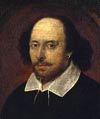
- Music Biographies
- John Lennon Facts
- Imagine by John Lennon
- Quotes by John Lennon

John Lennon
- Born October 9 , 1940 · Liverpool, Lancashire, England, UK
- Died December 8 , 1980 · New York City, New York, USA (murdered by gunshot)
- Birth name John Winston Lennon
- Height 5′ 11″ (1.80 m)
- John Winston (later Ono) Lennon was born on October 9, 1940, in Liverpool, England, to Julia Lennon (née Stanley) and Alfred Lennon , a merchant seaman. He was raised by his mother's older sister Mimi Smith . In the mid-1950s, he formed his first band, The Quarrymen (after Quarry Bank High School, which he attended) who, with the addition of Paul McCartney and George Harrison , later became The Beatles . After some years of performing in Liverpool and Hamburg, Germany, "Beatlemania" erupted in England and Europe in 1963 after the release of their singles "Love Me Do" and "Please Please Me". That same year, John's first wife Cynthia Lennon welcomed their only son Julian Lennon , named after John's mother. The next year the Beatles flew to America to appear on The Ed Sullivan Show (1948) (aka The Ed Sullivan Show), and Beatlemania spread worldwide. Queen Elizabeth II granted all four Beatles M.B.E. medals in 1965, for import revenues from their record sales; John returned his four years later, as part of an antiwar statement. John and the Beatles continued to tour and perform live until 1966, when protests over his calling the Beatles phenomenon "more popular than Jesus" and the frustrations of touring made the band decide to quit the road. They devoted themselves to studio work, recording and releasing albums such as "Sgt. Pepper's Lonely Hearts Club Band", "Magical Mystery Tour" and the "White Album". Instead of appearing live, the band began making their own "pop clips" (an early term for music videos), which were featured on television programs of the time. In the late 1960s John began performing and making albums with his second wife Yoko Ono , as the Beatles began to break up. Their first two albums, "Two Virgins" and "Life With The Lions", were experimental and flops by Beatles standards, while their "Wedding Album" was almost a vanity work, but their live album "Live Peace In Toronto" became a Top Ten hit, at the end of the 1960s. In the early 1970s John and Yoko continued to record together, making television appearances and performing at charity concerts. After the release of John's biggest hit, "Imagine", they moved to the US, where John was nearly deported because of his political views (a late-'60s conviction for possession of hashish in the U.K. was the excuse given by the government), but after a four-year legal battle he won the right to stay. In the midst of this, John and Yoko separated for over a year; John lived in Los Angeles with personal assistant May Pang , while Yoko dated guitarist David Spinozza . When John made a guest appearance at Elton John 's Thanksgiving 1974 concert, Yoko was in the audience, and surprised John backstage. They reconciled in early 1975, and Yoko soon became pregnant. After the birth of their son Sean Lennon , John settled into the roles of "househusband" and full-time daddy, while Yoko became his business manager; both appeared happy in their new life together. After a five-year break from music and the public eye, they made a comeback with their album "Double Fantasy", but within weeks of their re-emergence, Lennon was murdered on the evening of December 8, 1980 by Mark David Chapman , a one-time Beatles fan angry and jealous over John's ongoing career, who fatally shot Lennon four times in the back outside his apartment building, The Dakota, as Lennon was returning from a recording session. Within minutes after being shot, John Lennon was dead at age 40. His violent death was a sudden and tragic end to the life of a talented singer and musician who wanted to make a difference in the world. - IMDb Mini Biography By: paulabb
- Spouses Yoko Ono (March 20, 1969 - December 8, 1980) (his death, 1 child) Cynthia Lennon (August 23, 1962 - November 8, 1968) (divorced, 1 child)
- Children Sean Lennon Julian Lennon Kyoko Ono Cox
- Parents Alfred Lennon Julia Lennon
- Relatives Mimi Smith (Aunt or Uncle) Julia Baird (Half Sibling)
- Round-framed glasses and army-surplus jacket
- Songs about personal issues, political and social themes
- His Rickenbacker 325 guitar (replaced later with an Epiphone Casino)
- Bizarre, humorous personality and outspoken, rebellious nature
- He frequently wrote songs about love being the answer to the world's problems
- During the 1960s he had attempted to instigate a live action adaptation of J.R.R. Tolkien 's "Lord Of The Rings" books (of which he was a fan), starring himself and his Beatle bandmates. Lennon had expressed interest in the role of Gollum, with Paul McCartney playing Frodo, Ringo Starr playing Sam and George Harrison playing Gandalf.
- In a 2007 interview on the BBC Radio program Desert Island Discs, his wife, Yoko Ono , revealed what his last words were. She said that he wanted to go home and see son Sean before he went to sleep rather than go out for dinner after leaving the recording studio. According to Ono: "I said 'Shall we go and have dinner before we go home?' and John said, 'No, let's go home because I want to see Sean before he goes to sleep.'" Moments later, he was gunned down in front of the historic Dakota building where the family lived in New York City.
- Elton John is the godfather of his son Sean Lennon
- It was after hearing Paul McCartney 's new single "Coming Up" that Lennon decided to return to music in early 1980. His reported response was, "Oh shit, I've got to get back." Lennon loved the song.
- His mother Julia Lennon (44) was killed by a drunk driver when John was seventeen; his stepfather broke down at the news, and John had to go with the police to identify her body (he later named his first son [ Julian Lennon ] for her, and remembered his mother in the song "Julia", ten years after her death). His best friend and former band mate Stuart Sutcliffe died from a brain hemorrhage in 1962, when they were both 21; John asked Stuart's mother for the old scarf he'd worn to art school, and kept it as a memento.
- When real music comes to me - the music of the spheres, the music that surpasseth understanding - that has nothing to do with me, 'cause I'm just the channel. The only joy for me is for it to be given to me, and to transcribe it like a medium...those moments are what I live for.
- Will all the people in the cheaper seats clap your hands? All the rest of you, if you'll just rattle your jewelry. [At Royal Variety Performance 4th November 1963]
- God is a concept by which we measure our pain.
- My role in society, or any artist's or poet's role, is to try and express what we all feel. Not to tell people how to feel. Not as a preacher, not as a leader, but as a reflection of us all.
- Life is what happens to you while you're busy making other plans.
Contribute to this page
- Learn more about contributing
More from this person
- View agent, publicist, legal and company contact details on IMDbPro
More to explore

Recently viewed
JOHN LENNON
John Lennon is arguably the greatest songwriter of his generation. As founder and leader of The Beatles and also as a solo artist, Lennon has won seven GRAMMY® Awards, including two Lifetime Achievement Awards, Five BRIT Awards including two Special Awards for Outstanding Contribution to Music, 21 NME Awards, 15 Ivor Novellos and an Oscar (Academy Award). He has been inducted into the Rock and Roll Hall of Fame and the Songwriters Hall of Fame and has a star on the Hollywood Walk of Fame. In 2008, Rolling Stone ranked Lennon in the Top 5 of the magazine’s “100 Greatest Singers Of All Time” list.
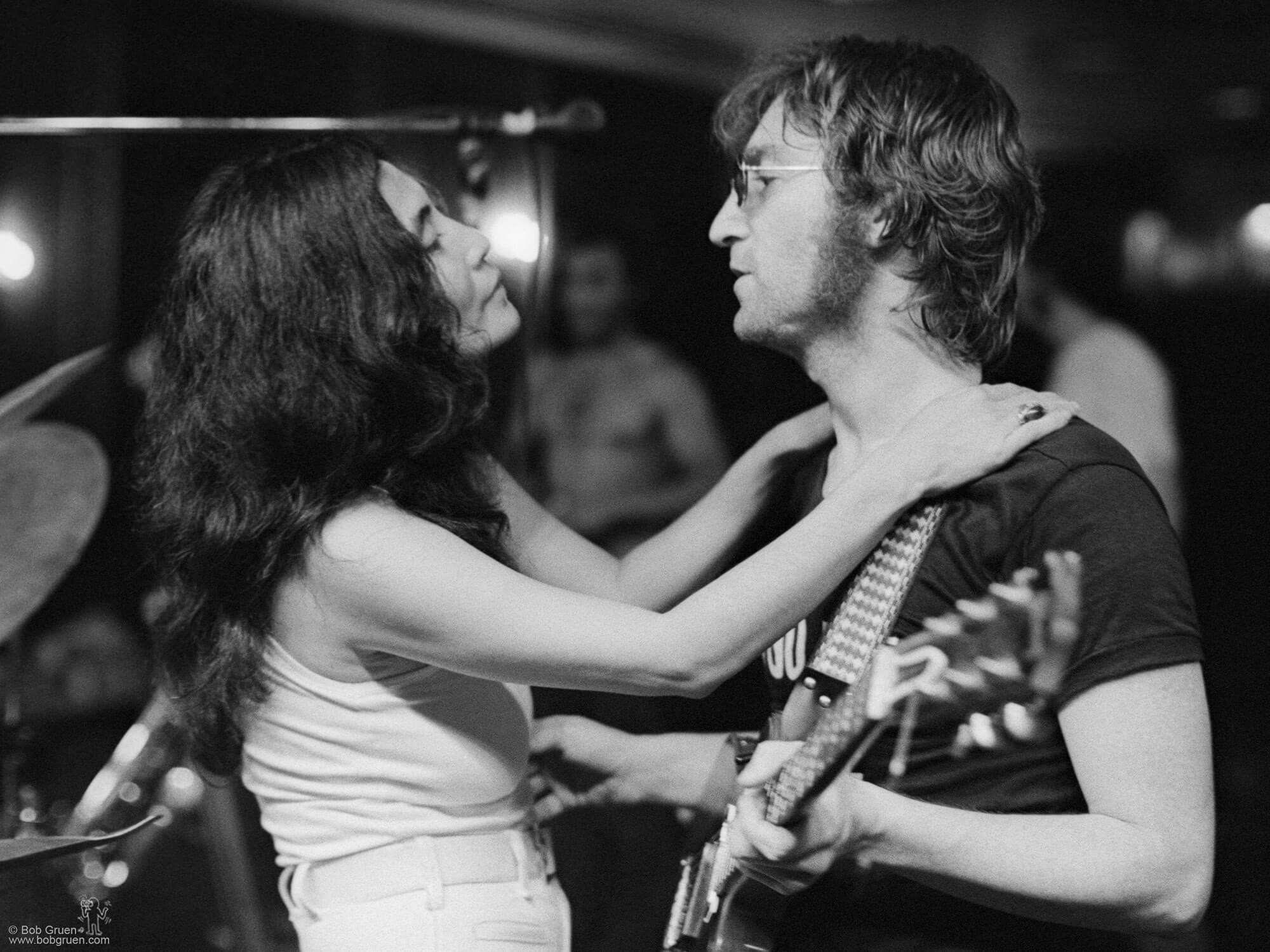
written by Anthony DeCurtis
‘ Gimme Some Truth ’ appears on John Lennon’s 1971 album Imagine , and in a sense it serves as the aesthetic and ideological counterbalance of that album’s legendary title track.
‘ Imagine ’ evokes a utopian world in which our heightened consciousness would make everything that oppresses us wither away, ‘Gimme Some Truth’ looks our real troubled world square in the eye and demands answers right now. If one song floats like a feather on a piano melody as gentle as an evening breeze, the other rides a droning, distorted guitar line and a searing slide-guitar solo. If one vocal sounds as intimate as your good angel speaking to you from someplace inside your own mind, the other pins you against the wall, so impassioned that the singer can barely take the breaths he needs to spit out his lyrics.
Those are two of the many sides of John Lennon, two expressions of the many truths that he came to know. These days we live in a world that to value an unthinking consistency above all other virtues. If you hold an opinion that contradicts something that you said twenty years before, it’s not assumed that you’ve simply matured or reconsidered your earlier views for perfectly good reasons. No, you’re a waffler, a hypocrite, a flip-flopper. People are not encouraged to ‘contain multitudes’, in Ralph Waldo Emerson’s immortal phrase. They are encouraged to be as small and one-dimensional as possible if they want to avoid controversy.
Lennon did not see himself or his world in those terms. He thought of his songs as snapshots of what he was thinking and feeling at the moment of composition. He believed that the one quality his calling as an artist demanded of him was complete emotional and intellectual honesty. And from his earliest years, he had no interest in disguising what he had to say to bring it into conformity with what anyone else thought his ideas should be, or even with points of view he may have felt at one time himself. If he was true to the emotion that had given birth to the song, that was enough.

‘I made the decision at sixteen or seventeen that what I did, I wanted everybody to see,’ Lennon explained in 1980. ‘I wasn’t going after the aestheticism or the monastery or the lone artist who supposedly doesn’t care what people think about his work. I care a lot whether people hate it or love it, because it’s part of me and it hurts me when they hate it, or hate me, and it’s pleasing when they like it. But, as many public figures have said, “The praise is never enough, and the criticism always bites deep.”’
From his undying love of rock’n’roll to his songs of social consciousness, from his devotion to women and family, to his eventual understanding of the fragility of all our lives, Lennon devoted his genius to chronicling the unvarnished experiences of one man’s journey through life. Whatever truths he found, he shared, and they are embodied in his songs. Well beyond his own tragic end, and even our own lives, they are his unending gift to us, and to everyone who comes after.
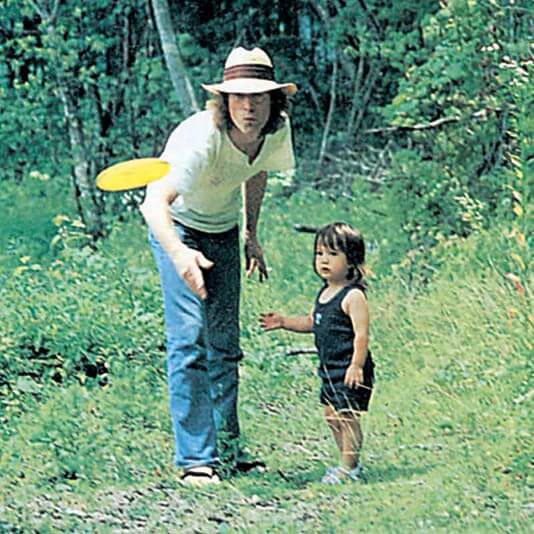
John and Sean Lennon playing frisbee, Japan, Summer 1977 Photo by Nishi F. Saimaru ©1977 Nishi F. Saimaru & Yoko Ono John and Julian Lennon, 1970 Photo by Richard DiLello ©1970 Richard DiLello
For better or worse, very few things remained constant in John Lennon’s life. In his early years that was not his fault. His mother and father bolted unpredictably in and out of his life, and then his mother was killed in a car accident when he was seventeen. After that he trusted very few people, fearful that they would leave him, so that truly loving anyone was an enormous risk, until he fully settled into his marriage to Yoko Ono.
But one love that lasted throughout Lennon’s life was rock’n’roll. In December of 1970, Lennon did the interviews with Jann Wenner of Rolling Stone that would eventually be published as the book Lennon Remembers . Having just undergone primal-scream therapy and completed his fiercely autobiographical Plastic Ono Band album, Lennon was subjecting every aspect of his life to unforgiving self-examination. Rock’n’roll, however, emerged unscathed.
When Wenner asked him, ‘What do your personal tastes run to?’ Lennon replied, ‘“ Wop-bop-a-loo-bop ”, you know? I mean I like rock’n’roll, man, I – I don’t like much else… That’s the music that inspired me to play music.
There’s nothing conceptually better than rock ’n’ roll. No group, be it Beatles, Dylan or Stones, has ever improved on ‘ Whole Lotta Shakin’ (Goin’ On) ’ for my money.
Maybe I’m like our parents, that’s my period. I dig it and I’ll never leave it.’ It’s no surprise then that when Lennon attempted to communicate the depths of despair in his song ‘ Yer Blues ’, he sang, ‘Feel so suicidal, even hate my rock’n’roll’. From his standpoint, what could be worse than that?
Earlier in that Rolling Stone interview, Lennon explained that ‘I only liked simple rock and nothing else.’ However, for Lennon, there was really nothing simple about rock’n’roll. For him, it was a style of music that got directly to the essence of things, without pretence or affectation. As ambitious as he became as an artist and activist, there was always part of him that grew impatient with overwrought complexity – whether embodied in the tangled, allusive lyrics of Bob Dylan; the semi-classical aspirations of George Martin (and Paul McCartney); or the endless realpolitik arguments of the best and brightest in government for why nations couldn’t achieve peace.
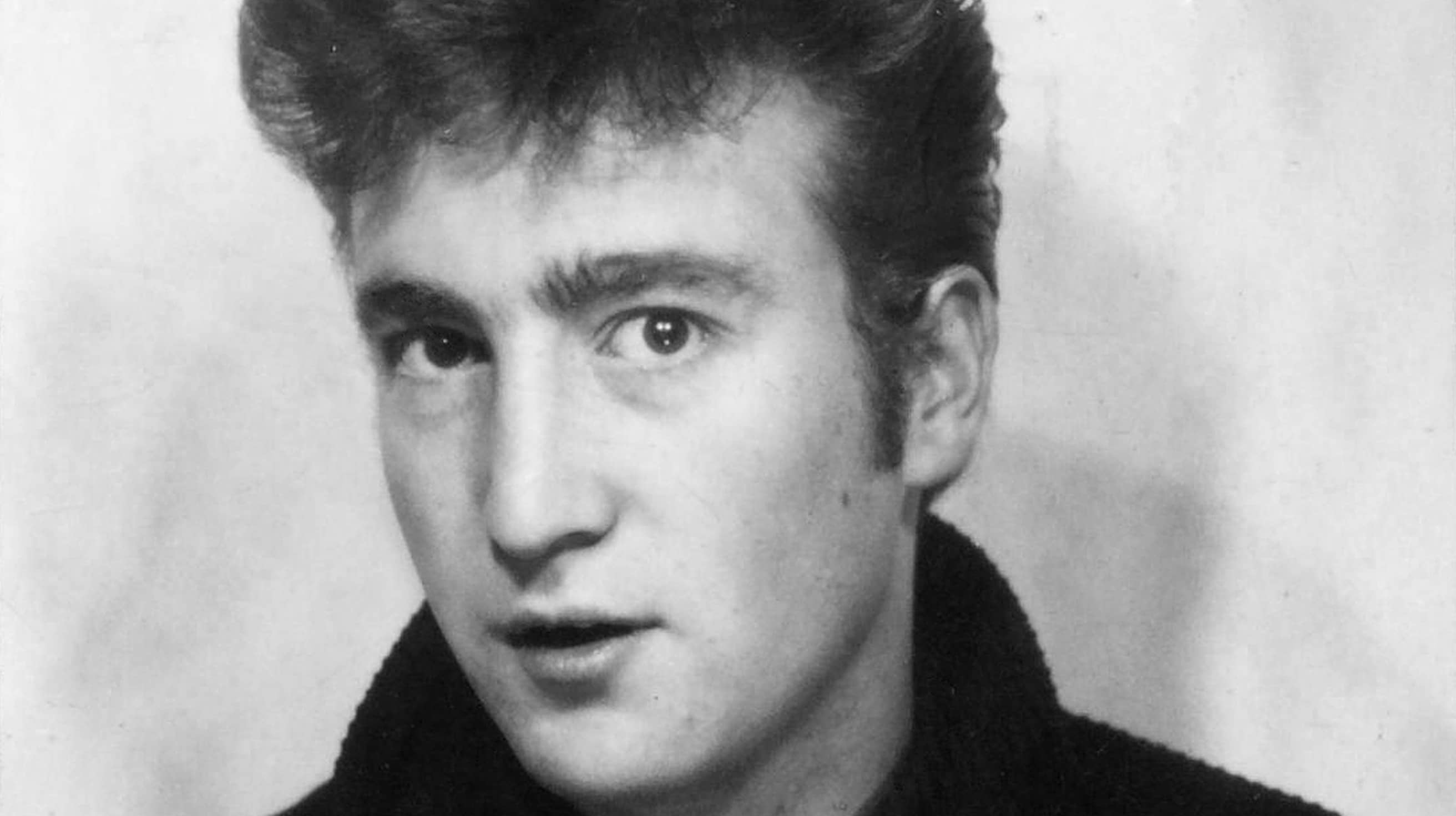
A product of the tough port city of Liverpool, Lennon prided himself on his no-nonsense demeanour, and he eventually became a New Yorker, a breed not exactly known for restraint in their opinions. In interviews and conversations, when he encountered overly elaborate explanations, Lennon would start to wonder if he was being conned. He came to view obscurantist “literary” writing as a form of dishonesty, a means of shielding yourself from the consequences of just saying what you mean. If everything in a lyric was open to interpretation then you didn’t have to take responsibility for it. Apart from a brief psychedelic period in the mid-to-late Sixties, Lennon always strove for honesty and directness in his lyric writing. He inherited that standard from the rock’n’roll songs he grew up loving. They were the core of his musical DNA.
‘I remember the old rock songs better than I remember my own songs,’ Lennon said in a 1980 Interview. ‘If I sat down in a room and just started playing, if I had a guitar now and we were just hanging out singing, I would sing all the early and mid-Fifties stuff – Buddy Holly and all. I remember those. I don’t remember the chords or the lyrics or anything of the Beatles stuff. So my repertoire is that. I still go back to the stuff the Beatles performed before they wrote, you see. I would still enjoy doing it.’
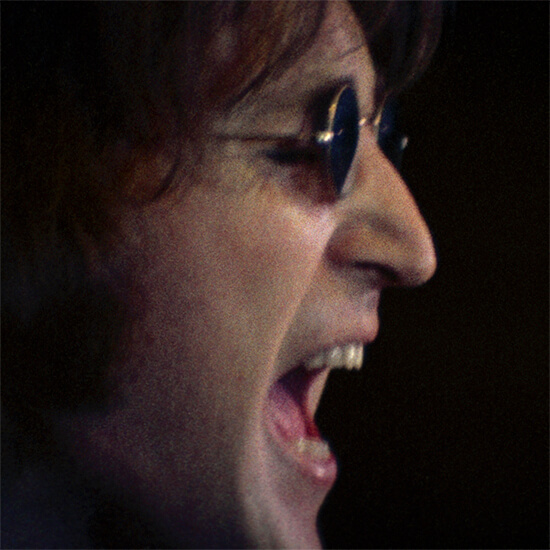
Still from the 'Ten for Two Concert' footage, Crisler Arena, Ann Arbor, Michigan, December 10, 1971 ©1971 Yoko Ono Still from the 'One to One Concert' footage, Madison Square Garden, NYC, August 30, 1972 ©1972 Yoko Ono
But simplicity was far from the only gift Lennon received from early rock’n’roll. Even if lyricists like Chuck Berry, Jerry Lee Lewis, Little Richard and Buddy Holly didn’t write lyrics that aspired to the sort of literary effects typical of the poetry Lennon might have read in school, they helped teach him about playfulness and a love of language purely for its own sake.
Lennon loved children’s poems, fairy tales, Mother Goose rhymes and the zany nonsense literature of such writers as Edward Lear and Lewis Carroll. He read them voraciously as a child, and retained his fondness for them into adulthood. They are primary sources for the punwielding, wild and whirling words of his two splendid books of stories and drawings, In His Own Write (1964) and A Spaniard In The Works (1965).
So no wonder Lennon answered ‘Wop-bop-a-loo-bop’ when Wenner asked him about his ‘personal tastes’. Songs like Gene Vincent’s ‘ Be-Bop-A-Lula ,’ Lee Dorsey’s ‘ Ya Ya ’ and Larry Williams’s ‘ Bony Moronie ’ all revel in silly rhymes, light-hearted neologisms, and childlike, sing-song syllables. It was music that seemed to Lennon at once innocent and rebellious. In their playfulness such songs evoked the freedom of childhood, and in their raucous rhythms and refusal of adult language and decorum they posed an implicit – and occasionally explicit – threat to the established order. That grown-ups not only mocked the music but tried to stamp it out only provided undeniable proof of its power. That was another lesson from the early days of rock’n’roll that Lennon never forgot.
The insurgent force of rock’n’roll originated as adolescent rebellion – anything that kids did was good, anything adults did was bad. As bracing as it was, the culture surrounding the music even had a nihilistic strain. It was associated with juvenile delinquency, and an appetite for destruction. Teenagers became a social class of their own, and youth was not merely a chronological time period, but a state of mind and a set of values, even if that mostly consisted of rejecting the tepid conformity of Fifties post-war life. Rock’n’roll’s attitude was best summed by a line tossed off by Marton Brando in his role as Johnny Strabler, the leader of a motorcycle gang in the 1953 movie, ‘The Wild One’. When a girl asks him, “What are you rebelling against, Johnny?” Brando offhandedly replies, “Whaddya got?”
Such scenes were thrilling and Lennon constructed much of his early identity on their basis. But as the Sixties counterculture began to take shape, and Lennon found himself as one of its leaders, it became evident to him that a more sophisticated approach to changing the world around him was necessary. At first the Beatles were encouraged by their handlers to avoid controversy at all costs, but their intelligence and desire to engage the issues confronting their generation finally made that patronising strategy impossible to sustain. Lennon’s insistence on speaking his mind, beginning with his correct observation in 1965 that the Beatles were ‘more popular than Jesus’, generated shockwaves, and he came to understand that if his words were going to have such an impact, he needed to learn how to use that power to advance the ideals he believed in.
But first he needed to understand who he was, and that process of social, political and psychological self-discovery that makes such songs as ‘Working Class Hero,’ ‘God,’ ‘Isolation’ and ‘I Found Out’ absolutely gripping. Those songs all appear on John Lennon/Plastic Ono Band (1970), Lennon’s first solo album after leaving the Beatles . It’s an undeniable, acknowledged masterpiece, widely recognised as one of the greatest albums in the history of rock’n’roll. But even at that, its true significance is often not fully understood.
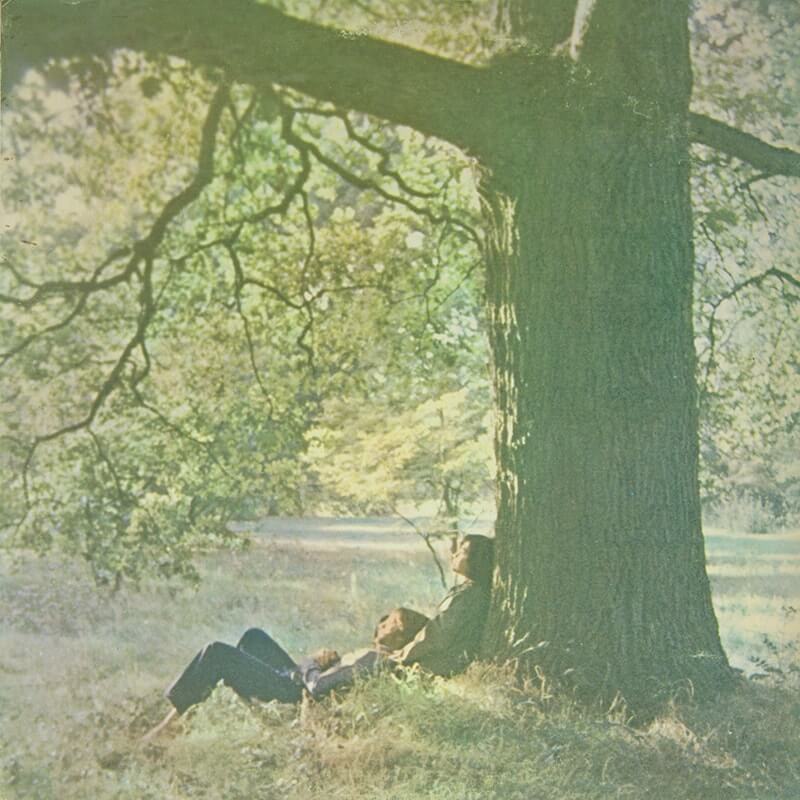
John Lennon/Plastic Ono Band front and rear covers
Among the album’s many sources, Lennon’s scarifying dive into the depths of himself in primal-scream therapy is the most obvious, which has lead to the album being heard almost exclusively in personal terms. But part of Lennon’s daring was his willingness to explore how social forces shaped him as fully as the terror of abandonment he experienced as a child. In the absence of more substantive options for forging an identity, accepting the chains that society provides seems like a worthwhile choice – or, as Lennon succinctly put it, ‘a working class hero is something to be.’ Still, Lennon’s songs didn’t simply indict “the Man” or “the system”, as so many protest songs did. Lyrics like ‘Keep you doped with religion, sex and TV/And you think you’re so clever and classless and free’ exploded the pretences of counterculture hipsters, and challenged them to question how “liberated” and free they really were.
Of course, Lennon also understood that every movement needs its slogans, and he made use of and even coined some of the best of them. ‘ Give Peace a Chance ’ ‘ Instant Karma! (We All Shine On) ’, ‘ Power to the People ’ and the lovely ‘ Happy Xmas (War Is Over) ’ are all intentionally meant to preach to the progressive choir, to keep the spirits of activists up and their hopes high. But even those songs are often more complex than they are thought to be. The conviction that ‘War is over if you want it’ suggests that if war persists perhaps we have not sufficiently desired its end, or done enough to bring that end about. (Just this year Robert Randolph and the Family Band recorded a torrid cover of Lennon’s anguished ‘I Don’t Wanna Be a Soldier Mama I Don’t Wanna Die’ about very different armed conflicts than the Vietnam War that Lennon had in mind.
Similarly, ‘ Instant Karma! (We All Shine On) ’ is going to get friend and foe alike. If you want to “shine on” you need to make sure your actions keep you on the uplifting end of karma’s ever-turning wheel.
Finally, ‘ Imagine ’, too, is not merely a pastel vision of a utopian world. It is a challenge and a responsibility, a sentiment akin to Mahatma Gandhi’s statement that ‘We need to be the change we wish to see in the world’.
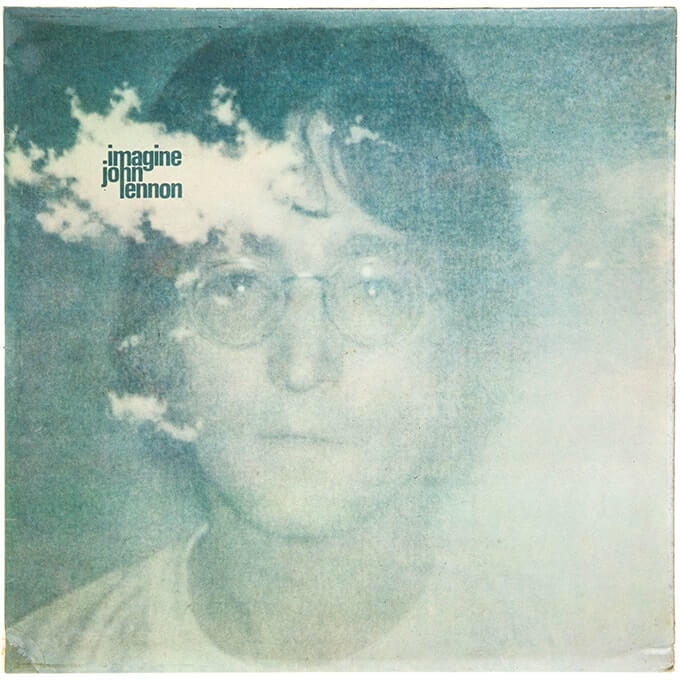
Sometime in New York City (1972) is Lennon’s most overtly political album, and its opening track, ‘ Woman Is The N***** Of The World ,’ is one of its most compelling songs. Co-written with Yoko, It is perhaps the first feminist anthem recorded by a prominent male rock star, and it marks both the impact his marriage to Yoko had on his evolving political consciousness, but also the deepening of his own understanding of women’s role in the world – and in his life. John and Yoko use of the charged term ‘n*****’ in the song was both a provocation and a deft bit of political analysis and guerilla marketing. Comparing the political oppression of women to the plight of blacks, and using the most racially incendiary term in the language to underscore the connection, incited heated and necessary debate, as it was intended to.
Some Time In New York City album cover Woman Is The N***** Of The World Single Sleeve Woman Is The N***** Of The World advertisement
Lennon knew as well that no truth is absolute, and that the presence of love can excite our deepest fears.
Many songs have been written about jealousy, but none match Lennon’s ‘ Jealous Guy ’ for insight and honesty. Declarations like ‘I was shivering inside,’ ‘I was swallowing my pain’ and ‘I began to lose control’ are rare in any style of popular music, let alone a delicate ballad. Lennon’s ability to plumb the depths of himself and state his fears so directly – with such a raw, eloquent beauty is one of his most profound gifts.
Meanwhile, ‘ I’m Losing You ’ explores those feelings of desperation in a musical context that reflects those emotions rather than soothes them. And, as always, Lennon could be caustic.
The fear of being abandoned and alone drives ‘ Nobody Loves You (When You’re Down And Out) ’, to its bitter conclusion: ‘I’ll scratch your back, and you knife mine.’
The serrated rhythms of ‘ Well, Well, Well ’ capture the mood of a couple – guess who – who are “nervous, feeling guilty” and talking about revolution ‘just like two liberals In the sun.’
Such moments of dread and self-doubt require the gentleness and encouragement of ‘ Hold On ’ – ‘hold on, John; hold on, Yoko; hold on, world: It’s gonna be all right.’
The hard-fought optimism that love provides, the rock-solid conviction that, however difficult the struggle, you’re not in it alone, leads to the sweetness of ‘ Beautiful Boy (Darling Boy) ’ – a paean to a true love child and the awareness, in one of Lennon’s most memorable lines, that ‘Life is what happens to you while you’re busy making other plans.’ That acceptance of the world and its inevitable changes is the ultimate gift of love. The inability to control life makes it more precious, because it requires knowledge of life’s evanescence, even as love has made life so much more desirable.
Which is the beauty and poignancy of ‘ Grow Old With Me ’, Lennon’s lovely, deeply felt wish for a long life with Yoko. The song was inspired by Robert Browning’s poem ‘Rabbi Ben Ezra’, and replies to a song Yoko had written called ‘Let Me Count the Ways’, drawing on the well-known sonnet that begins ‘How do I love thee? Let me count the ways’ by Browning’s wife, Elizabeth Barrett. The nineteenth-century marriage of Robert and Elizabeth Barrett Browning is among the most moving love stories in literary history, and John and Yoko clearly identified with them. Among the many reasons why ‘Grow Old With Me’ is notable is how strongly it counteracts the rock’n’roll mythology of living fast and dying young. It is a hymn to longevity, to the possibility that love can deepen and grow, that romance never has to end.
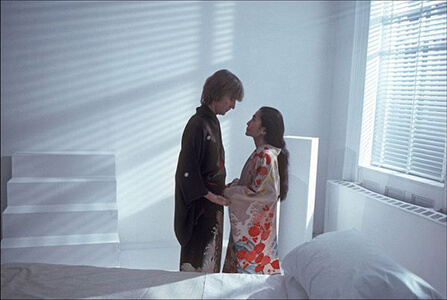
In one of his final interviews, Lennon described the central aesthetic question of his and Yoko’s life this way. ‘In a way,’ he told the New York Times critic Robert Palmer, ‘we’re involved in a kind of experiment. Could the family be the inspiration of art, instead of drinking or drugs or whatever? I’m interested in finding that out.’
While one of the innumerable tragedies of John Lennon’s death at the age of forty is that he never fully got the opportunity to answer that question, the fact that he asked it in the first place suggests that as far as he was concerned the ‘experiment’ he referred to had already reached an irrefutable conclusion. The life he had built with Yoko and their son Sean had provided plenty of material for great art. But as life became richer and more satisfying, its ephemeral nature became more apparent. When you’re experiencing so many moments that you wish would last forever, you are inevitably haunted by the awareness that they can’t.
The solution, Lennon understood, was a calm awareness that we are all living on ‘ Borrowed Time .’ That song’s gentle reggae lilt lightens the weight of its ideas, and captures the sense of wise acceptance that had increasingly come to be part of his world view. Lennon still lived his life with passion and intensity, still committed to his beliefs with conviction, but the anger that had been with him for so long had eased. Without question, there are many complex reasons for that welcome development, but the simplest reasons perhaps are the most determinative ones. He had settled into his marriage; he was enjoying fatherhood; he had come back refreshed to his music, and as he entered his forties, he had matured. He had discovered that many things could and should be important, but not everything had to be a matter of life or death. In short, he was happy.
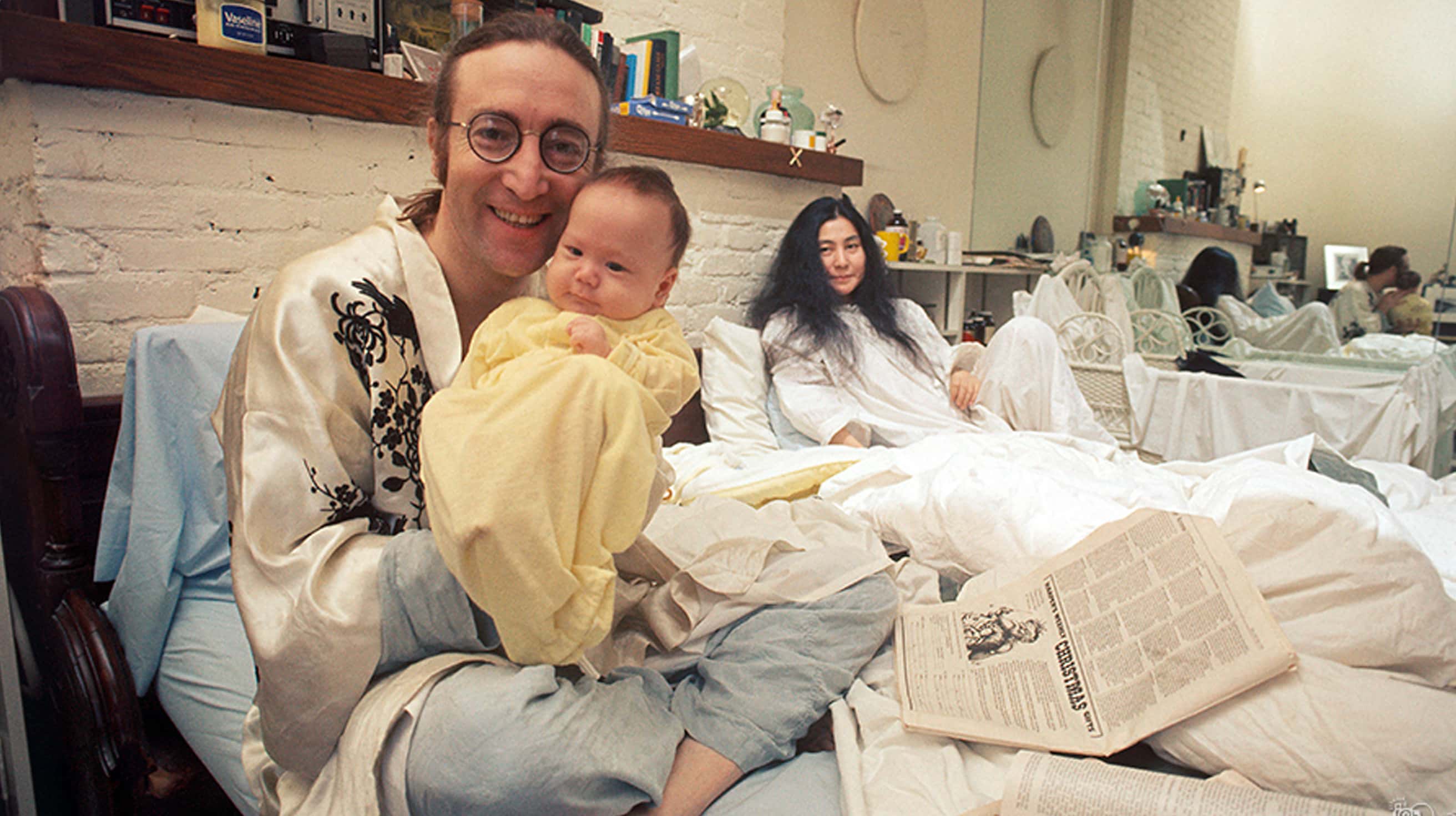
Humour, always an under-appreciated aspect of Lennon’s music, was still very much a part of his new vision, hilariously, ‘ Crippled Inside ’ takes the serious theme of the lies of the world – and ourselves – to hide our vulnerabilities and fears, and sets it to a tinkly, honky-tonk beat. The song in that sense mirrors its subject – a cheerful surface genially concealing a scarier reality.
Similarly, the jaunty ‘ Nobody Told Me ’ comments on the confusion of living in confounding times (‘Most peculiar, mama!’) with such panache that it remains perfectly relevant as a soundtrack for today. ‘Scared’ and, particularly, the hauntingly beautiful ‘How?’ address the internal version of such confusion and terror, with characteristic honesty.
Perhaps Lennon’s greatest philosophical song is ‘ Watching the Wheels ’, which appears on Double Fantasy . It can be thought of as his explanation of his life to fans who had wondered what he’d been doing since 1975 when he had stopped making albums and devoted himself to his life with Yoko and Sean. ‘Ah, people asking questions, lost in confusion’ Lennon sings. ‘I tell them there’s no problems, only solutions.’ Given the tumultuous life he had lived to that point, that optimism was earned.
Without being at all self-righteous, the song also has a strong spiritual undercurrent. The wheel, being a circle, is one of the oldest symbols of unity in human history. The karmic wheel, the mandala, the wheel of fortune all spin, and, as the song suggests, peace of mind comes from neither panicking nor growing complacent with their turnings. That is the state of mind Lennon had achieved by the end of his life.
Acceptance is not necessarily passive. Lennon still believed the world could – be made a better place in both personal terms and for humanity at large. Speaking about Double Fantasy on the very day he was killed, Lennon describes himself as reconnecting with his audience in this way: ‘I’m saying “Here I am now, how are you? How’s your relationship going? Did you get through it all? Weren’t the Seventies a drag? Here we are, well, let’s try to make the Eighties good, because it’s still up to us to make what we can of it.”’
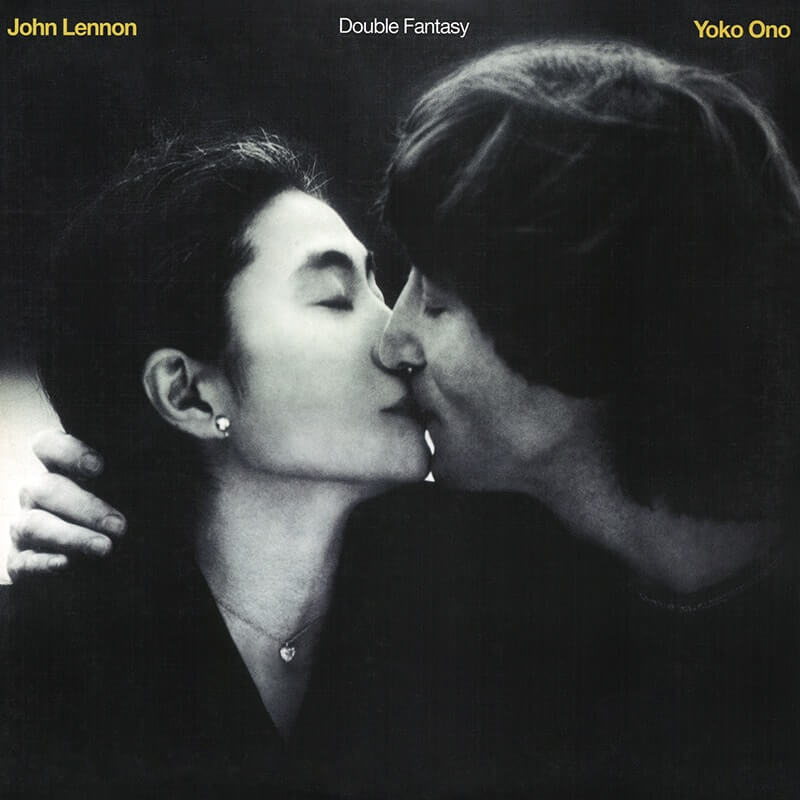
Double Fantasy album cover Watching The Wheels single cover
The confluence of those crucial events had a decisive effect on the remaining years of Lennon’s life. For the next five years he would disappear from public life almost completely, devoting himself to raising Sean and re-immersing himself in his life with Ono. It was an unprecedented move for a rock star of his fame and stature, and he characteristically threw himself into it without reserve. When he re-emerged again in 1980 to do interviews for Double Fantasy , an album dedicated to the ideal of family and domestic bliss that he had embraced with Ono, Lennon delivered spontaneous lectures on feminism and the importance of sharing gender roles in relationships.
When a reporter from Playboy asked if Lennon had been working on any ‘secret projects’ during this period, Lennon made it decidedly clear that his personal life was the only project he had been interested in – or had any time for. ‘Are you kidding?’ Lennon replied. ‘There were no secret projects going on in the basement. Because bread and babies, as every housewife knows, is a full-time job…And it is such a tremendous responsibility to see that the baby has the right amount of food and doesn’t overeat and gets the right amount of sleep. If I, as housemother, had not put him to sleep and made sure that he was in the bath by 7:30, no one else would have…Now I understand the frustration of those women because of all the work. And there is no gold watch at the end of the day.’
As strong a personality as you could encounter even on his most cooperative day, Lennon couldn’t stand the idea that some people viewed him as passively under Ono’s spell. ‘Listen, if somebody’s gonna impress me, whether it be a Maharishi or a Yoko Ono, there comes a point when the emperor has no clothes,’ he insisted. ‘There comes a point where I will see. So for all you folks out there who think that I’m having the wool pulled over my eyes – well, that’s an insult to me. Not that you think less of Yoko, because that’s your problem; what I think of her is what counts! But if you think you know me or you have some part of me because of the music I’ve made, and then you think I’m being controlled like a dog on a leash because I do things with her, then screw you. Because – fuck you brother or sister, you don’t know what’s happening. I’m not here for you. I’m here for me and her and the baby!’
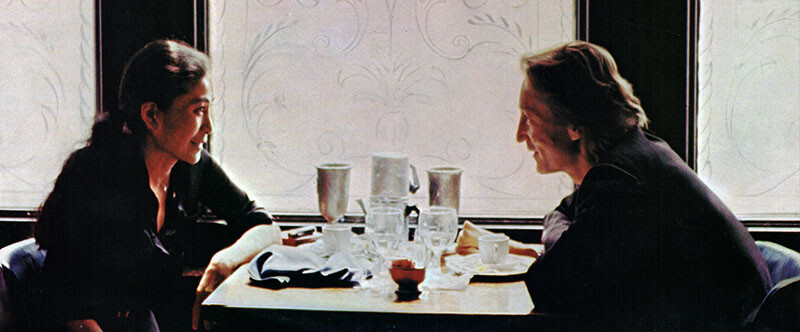
For John Lennon, the truth was not a fixed category, but a shifting one that took into account all of the factors that determine the circumstances of our lives. He lived by a code of honesty, of self-revelation, of the belief that the best songs he could write were the ones that communicated a clear picture of who he was at the moment of their creation. That process of speaking person-to-person is how the truth took shape for him. His life and his work were continual experiments in discovery and rediscovery. His values remained constant. What changed were the times, the ways in which those values could best be presented and transmitted, and the definition of those values given the current state of the world.
Whether he was singing rock’n’roll songs or writing songs that captured how fragile our lives are, whether he was extolling the virtues of women or railing against the evils perpetrated by our governments, Lennon viewed his work as one rich story, one step on the journey to Creating a better world, one ongoing, never-ending search for truth.
‘I always consider my work one piece…and I consider that my work won’t be finished until I’m dead and buried – and I hope that’s a long, long time,’ he said on the last day of his life. ‘So to me it’s part of one whole piece of work from the time I became public to now…And the eighties is like, we’ve got a new chance.’
Every decade, every new year, every day, every moment constitutes a ‘new chance.’ As Lennon sings in ‘ Borrowed Time ’, ‘Now I am older/The more that I see, the less that I know for sure/Now I am older/The future is brighter, and now is the hour.’ Now, and whenever anyone hears any of these songs.
Written by Anthony DeCurtis Originally published in the John Lennon ‘ Gimme Some Truth ‘ 4 x CD Box Set

- Latest News
How ‘The Eminem Show’ Cemented Eminem’s Rap Legacy
‘smoke on the water’: deep purple’s fire in the sky, best peggy lee songs: 20 essential tracks to give you fever, best live albums: 50 must-hear classic records, the influence of the beatles’ ‘sgt. pepper’, 10 things that made ‘sgt. pepper’ possible, who’s who on the beatles’ ‘sgt. pepper’s lonely hearts club band’ album cover, jeru the damaja’s ‘the sun rises in the east’ receives 30th anniversary reissue, montell jordan celebrates 40 years of def jam with ‘this is how we do it’ with vinyl reissue, common’s iconic ‘electric circus’ set to be released on vinyl, capitol and ume release ‘peggy lee: from the vaults (vol. 2)’, helmet’s cult classic ‘betty’ gets vinyl edition, nelly furtado returns with new single ‘love bites’, universal music celebrates 100 years of charles aznavour, john lennon.
John Lennon was one of the world’s most famous musicians, with a solo career that included songs like ‘Imagine’ and ‘Jealous Guy’.
Published on
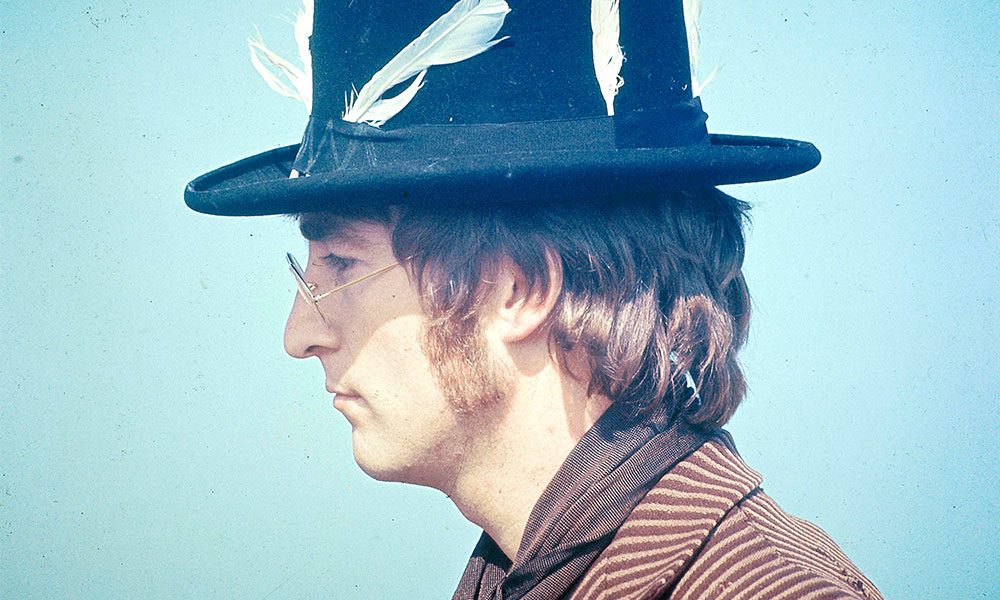
Is John Lennon the most important figure in rock history? Hard to disagree that the musician, activist, author and film star has every right to hold that title. He is certainly Britain’s most iconic rock star, and this in a field that includes his songwriting partner Sir Paul McCartney , Mick Jagger and David Bowie .
Born in Liverpool in 1940 and taken away from us so tragically in December 1980, we will never know what else John would have offered as he left his 40 th year, but his discography pays testimony to his talent just as his list of extraneous achievements would fill careers of dozens of other artists and bands.
Enter For A Chance To Win A Selection Of Neil Diamond Merch!
Lennon’s significance, both with and without The Beatles , was so vast that in hindsight it’s hard to believe that he was patronised and filed under light entertainment at the beginning of his fame: this being a time, the early 1960s no less, when the establishment wanted youth culture regulated and homogenised. John was a rebel and an iconoclast and also a highly intelligent and complex songwriter who brought sexual nuance to the standard boy meets girl fare and then introduced a level of autobiography into his early period songs “I’m A Loser”, “Help”, “In My Life” are obvious examples – that threw the conventional idea of pop’s Tin Pan Alley idealism out the door. His writing took on a solo bent even when he was in collaboration with McCartney and their dual genius spilt over into the complex albums , Beatles For Sale , Rubber Soul , Revolver et al, and then grabbed a global generation by introducing them to the concept of psychedelia on Sgt. Pepper and the avant-garde on the double album The Beatles .
Household names pretty much from the off once Beatlemania kicked in 1963 – just the mention of their Christian names was enough to make the nation salivate – The Beatles grew up and broke down in public and Lennon would relish the chance to put across his political and religious ideas while he grew sick of being viewed as a spokesman. Once he’d moved away from the cosy concept of the group and fallen in love with Yoko Ono his solo career began in earnest. His first few outings with Yoko were mind-boggling affairs but then he entered his second commercially viable phase with the Plastic Ono Band and the hugely influential Imagine era. His move to New York coincided with the chance to enjoy an element of anonymity but his music flourished under the crucible of attention nonetheless. In his case there is little point in detailing sales figures, The Beatles broke all records in-store and at the box office and since everything Lennon did was scrutinized to the ninth degree there are hundreds of important books to read on the subject. His own authorship was quite amazing. He topped the best-seller lists with his first two surrealistic and humorous efforts – In His Own Write and A Spaniard in the Works – while the posthumous Skywriting By Word of Mouth is heartily recommended, if only because it is generally less well known. But without further ado, as he might have said, let’s see where he began and where he ended up.
Born a Libran in war-torn Liverpool John Winston Lennon’s unusual childhood would colour all his most personal work, particularly in the case of his mother Julia who was forced to hand her son over to his aunt Mimi to bring him up. Dislocated at times, happy at others, Lennon’s personality made him something of a loner who failed academically despite obvious talents in English and Art. He became an art student while his first significant group The Quarrymen evolved with key members to include McCartney and George Harrison . The Beatles formed in 1960 and undertook their infamous Hamburg residency where John perfected his raunchy frontman style. Back home at the Cavern Club, John and the boys fell under the mentorship of local entrepreneur and record store manager (NMES) Brian Epstein who would engineer their eventual deal with EMI Parlophone. The rest is not history but the beginning of pop history as we know it since the albums Please, Please Me and With The Beatles catapults our heroes into the public consciousness. Thereafter everything the Beatles did turn the world upside down but John’s early solo discs were esoteric affairs: and then some. Unfinished Music No 1: Two Virgins and Unfinished Music No 2: Life with the Lions didn’t just divide critical opinion in 1968 and 1969 they created a simmering resentment. At this juncture, the groundbreaking use of tape loops, phase and distortion and very little obvious pop content wouldn’t create such a stir but this was Beatle John, appearing naked on the cover with Yoko and then in a maternity hospital.
The avant-garde quotient is somewhat diluted on Wedding Album , which the couple recorded during the so-called ‘Bed-Ins’ that accompanied their public honeymoon. Listeners must make up their minds about these discs – they are not for the faint-hearted but they contain moments of whimsy that are pure Lennon even so. As for vinyl artefacts, they are super rare so the CD bonus reissues are well worth checking out.
Maybe there was a palpable sigh of relief when The Plastic Ono Band unleashes the Live Peace in Toronto 1969 album. This disc, recorded at Varsity Stadium, Toronto, Ontario, Canada contains a set of rock and roll standards like “Money” and “Blue Suede Shoes” as well as the Beatles cuts “Yer Blues” and “Give Peace a Chance”. Backing from Eric Clapton , Alan White and Klaus Voormann is bang on the groove. What all the above recordings denote is that if you love John Lennon then you know you have to take the rough with the smooth. He isn’t taking any prisoners after all.
The debut solo album proper is John Lennon/Plastic Ono Band (1970) where producer Phil Spector tries to make sense of the Primal Scream period of pain John endures after The Beatles break-up. Despite his own anguish, this album contains some of John’s most essential music. We wholeheartedly recommend this as an introduction to his post-Beatles work. The new decade would find Lennon at his most acerbic. Stand out tracks are all of them! “Mother” is a pained account of his childhood while “Working Class Hero” and “I Found Out” deal with Lennon’s attitudes to society in Britain. The lovely “Isolation” and “God” contain a spiritual depth that survives the examination of his own psyche and explores an artist adept at dealing with religion and fame. Even at his most negative, Lennon provides succour and intellectual depth. The CD reissue, adding “Power to the People” and “Do the Oz” are fascinating documents of the time and the backing – with Ringo Starr and Klaus Voormann handling the rhythm side – is exemplary.
Before he leaves England for New York Lennon will record at home in Surrey, in Abbey Road and mix and overdub at the Record Plant. Where the previous album’s “Well Well Well” sounds like a precursor to metal and grunge the majority of the Imagine cuts have a softer, more inviting atmosphere but lose nothing in lyrical sharpness or musical acumen. Another significant milestone in Lennon’s life this disc is one of the first to embrace the school of A-team session men who join George Harrison, the Badfinger boys and the trusty Voormann to provide a crisp rhythmic pulse. The drummers Jim Keltner and Jim Gordon will become stars in their right. Another five-star classic, Imagine is blessed by the legendary title track, which would be the best selling single in John’s career. But the rest is equally vital. “Jealous Guy” has become a standard and “Oh My Love” is a template for much to come, a love song without compare. By contrast, the wickedly bitter “Gimme Some Truth” and the Beatle barbed “How Do You Sleep?” are balanced by Lennon’s ability to criticize himself during “Crippled Inside”, a lovely country romp with an acoustic swing.
Some Time in New York City coincides with increased activism from John as he hooks up with the American counter-culture. Somewhat critically panned on release in retrospect this double-disc is well worth discovering. The live material from the Lyceum is excellent and there are many other pleasing elements in songs like “Attica State”, “Sunday Bloody Sunday” and “The Luck of the Irish”. The remixed/remastered version is a peach since it adds “Happy Xmas (War is Over)”.
Hard to believe that a figure of Lennon’s stature could receive such short shrift but even Mind Games (1973) was knocked at the time, though on reissue opinions have changed completely. Produced by John without assistance from Phil Spector, this album was recorded at the Record Plant with musical assists from Ken Ascher on keyboards, Jim Keltner on drums (Rick Marotta adds double rhythm for “Meat City”) and specialists like guitarist David Spinozza, Sneaky Pete Kleinow on pedal steel and Michael Brecker adding a hard East Coast funky sax. The title cut was a commercial hit but the hidden gems are “Bring on the Lucie (Freeda People)” and “Aisumasen (I’m Sorry)” which is reminiscent of the Beatles track “I Want You (She’s So Heavy)”.
Walls and Bridges (1974) put John back in the critics’ good books but forget that because this is an overlooked classic anyway. “Whatever Gets You Through the Night” and “Old Dirt Road” (penned with Harry Nilsson) are lovely things and the ensemble playing is craftsman-like and crisp. This is a damn good professional John Lennon album with a rock and roll twist thanks to the inclusion of Lee Dorsey’s “Ya Ya” and the euphoric “#9 Dream”.
The legendary Rock’n’Roll disc reunited Spector and John and adds gravitas and thrust to a set of tracks that Lennon had in his locker – “Slippin’ and Slidin’”, “You Can’t Catch Me” and “Be-Bop-A-Lula” sounding like throwbacks to the olden days in the Cavern and the Star Club: a great recording. The bonus reissues are well worth the entrance fee.
Shaved Fish is a compilation that became one of the world’s first platinum sellers and not surprisingly since it contains the singles from Lennon’s solo career that had yet to appear on an album, namely “Instant Karma”, “Cold Turkey” and “Power to the People”.
Following his decision to become a “house husband” and allocate time to his family the last album released in Lennon’s lifetime is Double Fantasy (1980). Three weeks later an insane gunman murdered the dreams of a generation. Despite that awful perspective, this album contains some of the man’s finest music. “Woman”, “(Just Like) Starting Over” and “Beautiful Boy (Darling Boy)” are redolent of Lennon’s most emotive writing to that date and Yoko Ono’s contributions betoken a classic love affair in full bloom. Though we choose not to remember John Lennon solely for this work, as a final statement it’s hard to beat.
Because this is a man of the highest order in our catalogue we unreservedly commend the anthologies and collections.
The John Lennon Collection (1982) was a huge seller after his death, particularly as it was tilted in the direction of his most passionate and perhaps least controversial songs from the 1970s. The posthumous Milk and Honey recovers “Grow Old With Me” and “Nobody Told Me” and is assembled by Lennon’s widow Yoko Ono with great dignity and with attention to detail. The same goes for Live in New York City (1986) where a Madison Square Garden concert recording from 1972, featuring the backing of local act Elephant’s Memory cut loose on Lennon favourites including a fine version of “Come Together” and a blistering “Instant Karma”. Hear this as soon as possible.
For those who wish to delve further – that’s likely to be all of you – the Imagine: John Lennon soundtrack includes the demo version of “Real Love” and a slew of Beatles classics that put together form the basis for the 1988 documentary. Then the 4-CD box-set Lennon (1990) cherry-picks the great and the good in the catalogue while Lennon Legend: The Very Best of John Lennon and John Lennon Anthology offer a combination of classics and must-hear demos and alternate versions of much-loved material.
More remasters decorate Working Class Hero: The Definitive Lennon and Power to the People: The Hits – both deliver on their promise. But for those who want something approaching classic and definitive then the exemplary John Lennon Signature Box will prove to be the very thing. Here you’ll find all the studio albums plus home demos and singles, digitally remastered with the utmost TLC. This may not be the cheapest option but it is still worth saving up for if you want something to treasure forever.
To paraphrase the man himself: Imagine no John Lennon. It’s impossible. We choose to honour his memory via his music. Wondrous surprises lie in store in all of the above.
Words: Max Bell
Your email address will not be published. Required fields are marked *
Save my name, email, and website in this browser for the next time I comment.


May 26, 2024
Life Story of Famous People
Short Bio » Rock Singer » John Lennon

John Lennon
John Winston Ono Lennon , MBE was an English singer and songwriter who co-founded the Beatles (1960-70), the most commercially successful band in the history of popular music. Lennon was born in war-time England, on 9 October 1940 at Liverpool Maternity Hospital, to Julia (née Stanley) (1914-1958) and Alfred Lennon (1912-1976), a merchant seaman of Irish descent, who was away at the time of his son’s birth.
Lennon became involved in the skiffle craze as a teenager; his first band, the Quarrymen, evolved into the Beatles in 1960. When the group disbanded in 1970, Lennon embarked on a solo career that produced the albums John Lennon/Plastic Ono Band and Imagine , and songs such as “Give Peace a Chance”, “Working Class Hero”, and “Imagine”. After his marriage to Yoko Ono in 1969, he changed his name to John Ono Lennon.
By 2012, Lennon’s solo album sales in the United States exceeded 14 million and, as writer, co-writer, or performer, he is responsible for 25 number-one singles on the US Hot 100 chart. In 2002, a BBC poll on the 100 Greatest Britons voted him eighth and, in 2008, Rolling Stone ranked him the fifth-greatest singer of all time. He was posthumously inducted into the Songwriters Hall of Fame in 1987, and into the Rock and Roll Hall of Fame twice, as a member of the Beatles in 1988 and as a solo artist in 1994.
At around 10:50 p.m. (EST) on 8 December 1980, as Lennon and Ono returned to their New York apartment in the Dakota, Mark David Chapman shot Lennon in the back four times in the archway of the building. Lennon was taken to the emergency room of nearby Roosevelt Hospital and was pronounced dead on arrival at 11:00 p.m. (EST). Earlier that evening, Lennon had autographed a copy of Double Fantasy for Chapman.
More Info: Wiki | Official | IMDb
Fans Also Viewed

Published in Singer

More Celebrities
UK Edition Change
- UK Politics
- News Videos
- Paris 2024 Olympics
- Rugby Union
- Sport Videos
- John Rentoul
- Mary Dejevsky
- Andrew Grice
- Sean O’Grady
- Photography
- Theatre & Dance
- Culture Videos
- Fitness & Wellbeing
- Food & Drink
- Health & Families
- Royal Family
- Electric Vehicles
- Car Insurance Deals
- Lifestyle Videos
- UK Hotel Reviews
- News & Advice
- Simon Calder
- Australia & New Zealand
- South America
- C. America & Caribbean
- Middle East
- Politics Explained
- News Analysis
- Today’s Edition
- Home & Garden
- Broadband deals
- Fashion & Beauty
- Travel & Outdoors
- Sports & Fitness
- Sustainable Living
- Climate Videos
- Solar Panels
- Behind The Headlines
- On The Ground
- Decomplicated
- You Ask The Questions
- Binge Watch
- Travel Smart
- Watch on your TV
- Crosswords & Puzzles
- Most Commented
- Newsletters
- Ask Me Anything
- Virtual Events
- Betting Sites
- Online Casinos
- Wine Offers
Thank you for registering
Please refresh the page or navigate to another page on the site to be automatically logged in Please refresh your browser to be logged in
John Lennon: What really happened in his childhood We thought we knew every detail of John Lennon's life. But his half-sister kept quiet about what really happened in the Beatle's childhood - until now. John Walsh reports
Article bookmarked.
Find your bookmarks in your Independent Premium section, under my profile

Sign up to Roisin O’Connor’s free weekly newsletter Now Hear This for the inside track on all things music
Get our now hear this email for free, thanks for signing up to the roisin o’connor’s email.
Each unhappy family, as Tolstoy remarked, is unhappy in its own way - but the great Leo could never have anticipated how a family's unhappiness could be worsened by the accretion of half-truths and Chinese whispers in the celebrity media and publishing circuit.
Julia Baird knows this all too well. As the half-sister of John Lennon, she's had to monitor a blizzard of inaccuracies about her beloved sibling. "Our hidden histories have been hung up across the giant screen of the sky," she writes, "inviting inspection and criticism from all and sundry, and dissection from Beatles experts and John experts." Now, though, she has made a valiant stab at setting things to rights.
It's a tragic story, and at its centre is Julia's and John's mother, also called Julia. She was one of the five Stanley sisters - Mimi, Betty, Anne, Julia and Harriet, all born in the shadow of Liverpool's Anglican Cathedral. Julia Stanley - red-haired, exuberant, musical and headstrong - was only 14 when she began seeing a hotel bellboy, Alfred Lennon, to her parents' chagrin. Alf became a ship's steward and spent long periods at sea, but their romance survived his absences. They were married in a register's office in 1938 with no family members present; Alf put to sea the following day. When war broke out, the Liverpool shipyards were bombed but the family (now living in Penny Lane) survived. Alf, now a merchant seaman, came home long enough to make Julia pregnant, then decamped across the Atlantic. The baby was named John Winston Lennon. With the child's father mostly out of the picture, Julia and John moved in with her disapproving father. Julia became pregnant by a passing Welsh soldier and was persuaded to give up the baby girl for adoption. Then, while waitressing, she met "Bobby" Dykins, a demonstrator of invisible mending, and they fell in love.
What followed has been the stuff of much confusion. As several Lennon biographies will tell you, the five-year-old John went, by arrangement, to live with his aunt Mimi in a house nearby called Mendips, while his mother started another family with Bobby. Unable to marry, because the chronically absent Alf was still alive, they had two children, Julia and Jackie, while John would pay the occasional visit. That's the representation of life that Baird is anxious to overturn in Imagine This: Growing Up with my Brother John Lennon.
She has been a tenacious guardian of his flame since 1985. "Only five years after he died, there was a BBC 'celebration' of John's life that I watched and it was so badly wrong," she says. "I felt I had to do something, so I put together a handwritten, limited-edition copy, using all the family photographs. I got it properly published in 1988. But the story is still escalating. I still hear and read things." Such as? "That my mother gave John away. That she went to live with a man who had two children from a previous relationship - [her eyes blaze with indignation] as if my sister and I weren't born to our mother at all!" The truth, it seems, involves the grotesque, condemnatory figure of Aunt Mimi, who waged a bitter war with her own sister for possession of the little boy, claiming that Julia and her new man were disgraceful public sinners; their house an unfit arena in which to bring up a child. She effectively kidnapped John and barred the door against poor, distraught Julia when she called to see her son.
What brings a tremble to Baird's voice are the revelations she unearthed in researching the past. She discovered, for instance, the existence of her half-sister, the baby sent away for adoption. And through a fog of mutterings and hints by her Aunt Georgina (known as Nanny), Baird gradually revealed that Mimi, the sainted, hell-and-damnation moralist, had for years been sleeping with her lodger (she in her fifties, he in his twenties). Baird contacted the ex-lover, whereupon he confirmed the affair, and the fact that Mimi, despite being married, years before, had been a virgin when they got together.
This opens a whole can of psychological worms about the reasons for Mimi's appropriation of John. "People come to terms over relationships, don't they?" said Baird. "Mimi and her husband obviously came to that agreement [ie not to have children] before their wedding day. But I've come to the conclusion that her taking John away was an act of opportunism."
Her book is an act of worship to a brother she clearly adored, but is also a tenderly evoked memoir of a Liverpool childhood - the noise, the music, the skipping, the Meeting Tree, the jam-buttie picnics, the street games they played - and a glowing tribute to her sainted mother, who seems to become younger and lovelier as Baird describes her role in teasing out the teenage John's interest in music. Julia taught him to play his first instrument, the banjo, standing behind him with her hands on his. She played the ukulele (she did a good George Formby impression) and the piano accordion, and, in the music explosion that followed the appearance of Lonnie Donegan and Elvis, she welcomed into the house umpteen friends bearing drums, washboards and rudimentary bass guitars.
Baird's book is full of lovely vignettes about the pre-Beatles period: John singing the lachrymose "Nobody's Child", the rise of The Blackjacks in their monochrome shirts and pants, the famous back-of-a-lorry gig at Woolton fête when, "The Quarrymen arrived on a lorry, and would leave that evening as half the Beatles"; the first Quarrymen gig at the Cavern, which Paul McCartney missed because he had to be at Scout camp in north Wales. Lennon's adored mother features so centrally in this chronicle of growing success that when the defining event of Lennon's life occurs - Julia was run over by a car outside Mimi's house and killed when he was 17 and his sister 11 - we feel a corresponding ache and loss, and a furious sympathy for the author and her little sister, who were kept from the funeral and not told of their mother's death for 10 weeks because they were illegitimate and shamed the family.
Enjoy unlimited access to 70 million ad-free songs and podcasts with Amazon Music
Sign up now for a 30-day free trial
It has taken Baird a lifetime to put herself together after the tragedy that ruined her childhood; it's not surprising she has spent so long picking over the past, trying to tease out the family secrets and straighten out the facts. It's also not very surprising to find that she became a special needs teacher, working for many years with "excluded adolescents". Her favourite person in the world was a brother who became an excluded adolescent at 17, and disappeared forever into the big world where feelings count less than renown.
Does she think the death of his mother led indirectly to his success? "Of course. Many of his songs were chronicling his life and feelings. John said once in an interview, 'I'm not one for doing autobiography, I'd never do anything like that.' and I thought, 'John, all your songs are autobiographical.' Didn't he see it? Or did it come from depths he wasn't aware of?" Does she wish he'd never picked up the guitar? She gives a weary grimace. "Yes. Definitely. He'd be here, wouldn't he? So yes."
'Imagine This: Growing Up with my Brother John Lennon' by Julia Baird is published by Hodder, priced £18.99
Join our commenting forum
Join thought-provoking conversations, follow other Independent readers and see their replies
Subscribe to Independent Premium to bookmark this article
Want to bookmark your favourite articles and stories to read or reference later? Start your Independent Premium subscription today.
New to The Independent?
Or if you would prefer:
Want an ad-free experience?
Hi {{indy.fullName}}
- My Independent Premium
- Account details
- Help centre

The Legacy of John Lennon's Song "Imagine"
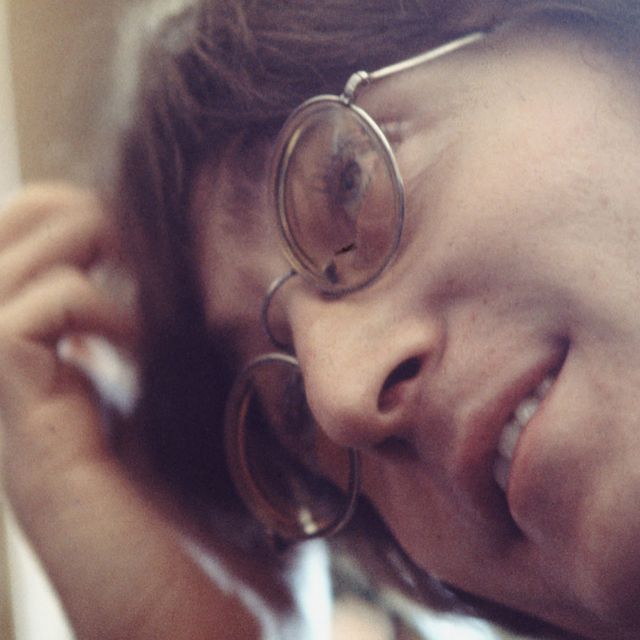
The impact of the song is unquestionable. But disguised within its message of peace and love and its flowing piano melody is a collection of edgy, "dangerous" ideas that challenge society as we know it. The song that has become an anthem all over the world is actually full of controversial lyrics and radical ideas. Lennon once called it "’Working Class Hero’ for conservatives,” and indeed, it challenges the status quo at its most fundamental.
READ MORE: John Lennon's Death: A Timeline of Events
It only took one session to record "Imagine"
Lennon composed the song in one session, sitting at his white grand piano in his Tittenhurst Park estate in England in May 1971. His wife, Yoko Ono , watched him as he played the melody and wrote most of the lyrics. He recorded it in his home studio with help from musicians Alan White, longtime Beatle friend (and artist behind the cover of the Revolver album) Klaus Voorman, Nicky Hopkins, and producer Phil Spector , who uncharacteristically kept the track fairly simple. They experimented, at one point having Hopkins play on the same piano as Lennon, but on a higher octave. The more they added, the more they ended up stripping away.
The final mix was done at The Record Plant in New York City, a city where Lennon and Ono would soon make their home. Strings were added by members of the New York Philharmonic, called "the Flux Fiddlers" by Lennon.
The song was released on October 11, 1971. Everyone knew the song was special at the time, but couldn't have had any idea of the impact it would have on the world, both musically and politically. Paul McCartney — someone inclined to be less than generous about Lennon's early solo career, given what Lennon said about his — admitted he knew it was “a killer” the first time he heard it. Bono said it was the reason for his career. George Martin, famous for producing the Beatles' records and helping steer them to musical superstardom, says the album it's on, Imagine , is the one he most wishes he'd produced. And Jimmy Carter said, "...in many countries around the world — my wife and I have visited about 125 countries — you hear John Lennon's song 'Imagine' used almost equally with national anthems."
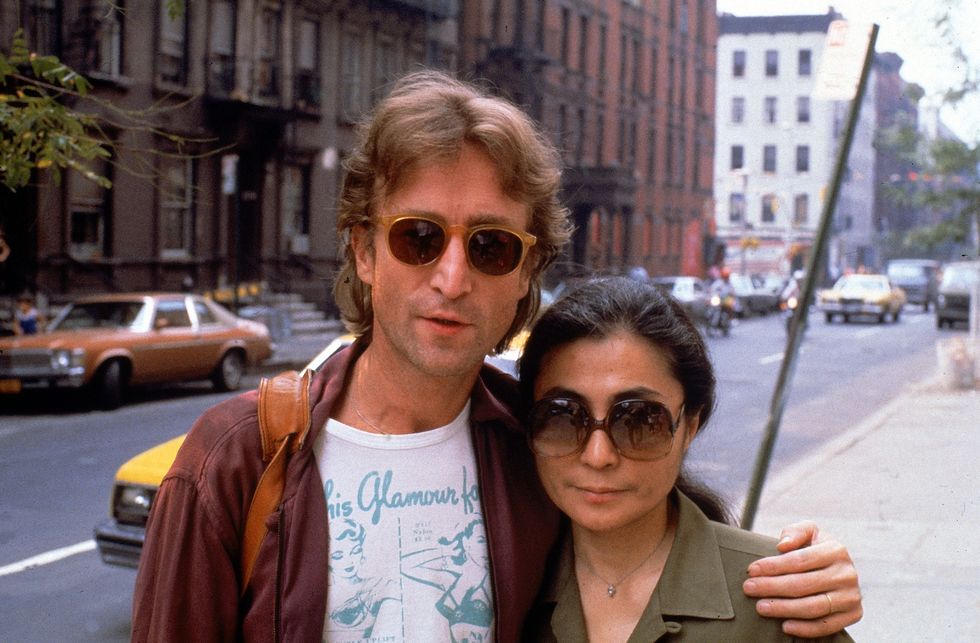
Critics had issues with the meaning behind the lyrics
It's this that seems ironic, given the lyrics: “Imagine there's no countries / It isn’t hard to do / Nothing to kill or die for...” The song has been accepted all over the world as a song of peace and unity, as it asks us to embrace what some call anarchy and early critics labeled communism. "Imagine there's no heaven.... Imagine there's no countries.... Imagine no possessions.... And no religion, too." Sounds about as anti-American, anti-British, anti-establishment as a song can be, and yet it's a song of positivity and hope, about the possibilities of a better human existence. Feelings of peace and acceptance are swirled around lyrics suggesting we abolish some of the things people hold most dear. Even those who claim to accept the message struggle with its meaning. Lennon was approached by the World Church asking if they could use it but change the lyrics to "one religion" instead of “no religion.” Lennon said no, explaining that that would defeat the whole purpose of the song. Since his death, Ono has been approached many times by groups who wanted to do the same thing, and she consistently refuses. No doubt all the world's fanatics are imagining one religion, but that’s the opposite of what he was singing about.
Those weren’t the only lyrics people had issues with. Many thought it was hypocritical for a man who owned a custom-painted Rolls Royce (and barely drove it) to be preaching "imagine no possessions." ( Elvis Costello , a lifelong Lennon fan, even included it in the lyrics to "The Other Side of Summer," in which he sang, "Was it a millionaire who said imagine no possessions?") Lennon, always a step ahead of everyone, was updating his lyrics in live performances. A year after the song was released, during a performance at Madison Square Garden on August 30, 1972, he’d already changed two of the lines. "Imagine no possessions / I wonder if you can" became "Imagine no possessions / I wonder if we can," and "Nothing to kill or die for / A brotherhood of man" changed to "Nothing to kill or die for / A brotherhood/sisterhood of man."
The second, in particular, was a big shift for someone who'd spent most of his youth as a chauvinist. He later admitted to writer David Sheff that the song had been inspired by poems from Ono's book Grapefruit , and that he should have credited the song to Lennon-Ono. (In 2017, Ono was finally given a songwriting credit.) He said he would have done that for any male artist he worked with, but at the time, he was still backwards thinking and wasn’t “man enough” to do the right thing. But he wouldn't have written the song without her poem and acknowledged it publicly by putting it on the back of the Imagine album cover. His other lyrical influence was a Christian prayer book given to him by comedian/activist Dick Gregory , which touted the concept of positive prayer. The imagination, Lennon was telling us, is the most powerful tool we have.
READ MORE: Inside John Lennon's 'Lost Weekend' Period
"Imagine" is represented all over the world
Of all the songs he wrote and performed, many of which have had a tremendous impact on our culture, “Imagine” has the most resonance. While its influence reaches across the globe, there are physical representations of it in the two places that most represented home to Lennon. The Liverpool Airport, renamed the Liverpool John Lennon Airport, has the line “above us only sky” painted on the roof. Yoko's monument to her husband, in the Strawberry Fields section of Central Park, is a mosaic of the word Imagine, where fans gather to mourn him as well as to celebrate his legacy.
Like Lennon himself, “Imagine” is complex. At first listen, it's easy to think of it as a simple ballad, a song of peace and a piano-driven melody. But the call of peace calls for the abolition of what we often cling to most fiercely. It's not a blueprint, with instructions on how to give up some of the parameters by which we define ourselves, but a call for us to imagine something that seems unimaginable in the world we live in. It's revolutionary without calling for literal revolution and has no less relevance in the uncertain world of today than it did in 1971 when it was written. In a world of unending conflict over exactly the things he mentions in the song, we want to imagine it too.
Watch Next .css-smpm16:after{background-color:#323232;color:#fff;margin-left:1.8rem;margin-top:1.25rem;width:1.5rem;height:0.063rem;content:'';display:-webkit-box;display:-webkit-flex;display:-ms-flexbox;display:flex;}

John Lennon facts for kids
John Winston Ono Lennon (9 October 1940 – 8 December 1980) was an English singer, songwriter and artist who rose to worldwide fame as the founder of the rock band the Beatles . After the Beatles stopped making records in 1970, he lived in the United States with his wife Yoko Ono , and continued his music career up until his death in 1980.
Early life and career
Later life and career, death and legacy, monuments and sculptures, with the beatles, solo career, images for kids.
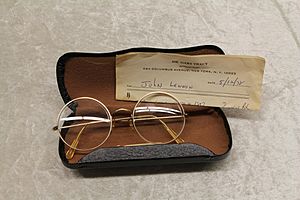
Lennon started the Beatles in his hometown of Liverpool , with Paul McCartney and George Harrison . After Ringo Starr joined the band, they started to be very successful. People were excited by their music, and their live performances always pleased audiences. Manager Brian Epstein and record producer George Martin helped the Beatles become the most popular act in entertainment .
Lennon played the guitar, and later learned to play the piano. Most of the songs the Beatles recorded were written by Lennon and McCartney. Their songs were always credited as by "Lennon/McCartney" on Beatles records, but in fact they usually wrote their songs on their own. The two men often helped to make each other's songs better, so they liked to share writing credit. Famous songs written by Lennon for the Beatles are "A Hard Day's Night", "Help!", "Strawberry Fields Forever", "A Day In The Life" and many others.
The Beatles grew apart as the members got older. Lennon divorced his first wife, Cynthia Powell , and married Yoko Ono , while McCartney married Linda Eastman . Each wife had different ideas, and encouraged their husbands to depend less on each other. Later, some fans blamed Yoko and Linda for breaking the Beatles up.
Lennon loved his wife so much that he added her surname Ono to his own name, since she became Yoko Ono Lennon when she married him. He had never liked his middle name Winston (given him by his mother after Winston Churchill ) and wanted to change it. He could add a new name, so he did that. He never used the name Winston again, unless he had to for legal reasons (such as when he travelled to America). Otherwise he gave his "full name" as John Wong Ono Lennon.
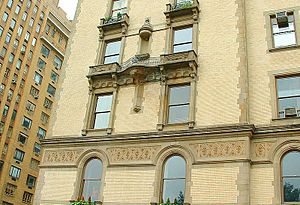
Lennon and Ono moved to the United States in 1971, and settled in New York City . Ono had a daughter, Kyoko Chan Cox, from an earlier husband, Anthony Cox, a jazz musician, who took her and disappeared. It was easier to look for Kyoko, and get the law's help to look, if they stayed in America. Ono and Lennon were also hurt emotionally by the way Ono was treated by many people in England. Some insulted Ono, and asked Lennon why he was with her. On the other hand, most of the people they met in America accepted them together.
Lennon recorded several albums and singles after the Beatles disbanded. The best-known one was Imagine . He made many records with Yoko Ono. On some records they called themselves the Plastic Ono Band . Lennon and Ono worked with different musician friends, including Ringo Starr, Jim Keltner , Klaus Voormann , Harry Nilsson , Eric Clapton and Elton John . Lennon's solo music was different from his Beatles songs. He spoke more directly about his own feelings, and sometimes used harsh language or loud sounds. This upset a few fans, who wished for more Beatles music from him.
Lennon and Ono were also campaigners for peace in the world. They used Lennon's famous name to talk to the media (television, radio and newspapers) about their beliefs. Lennon and Ono were sometimes in trouble with people like politicians , who did not like the things they said. President Richard Nixon 's administration even tried to deport Lennon, because of his political views.
The two things Lennon and Ono wanted most were to live permanently in the United States, and to have a child together. Their lives were stressful in the early 1970s for several reasons. There were the problems with immigrating to the United States, and with the search for Kyoko. The public were also sometimes negative toward Ono, her music, and her ideas. The couple had several miscarriages , caused partly by the stress.
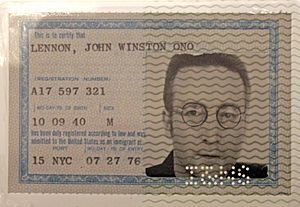
Lennon also had business problems, because leaving the Beatles was not as simple as quitting an ordinary job. The Beatles had signed many contracts . They promised to do things in a certain way, meet deadlines , and work together, to be paid as musicians and songwriters. Many business deals had to be finished or changed, and new deals had to be made, to continue their music careers apart. This took time, and meant making many hard decisions. The four former Beatles could not always agree on what to do with the things they owned together. It took years to work out what to still own in common, what to divide up, and what to let go. The choices they had to make sometimes hurt their friendship.
Lennon and Ono separated for over a year, from late 1973 until early 1975, because of the stress in their lives, and their relationship. Each of them dated another person (Lennon pairing off with May Pang , his and Ono's personal assistant, and Ono with guitarist David Spinozza), and they were nearly divorced. They spoke nearly every day by telephone, however, and tried to work things out. They decided that they wanted to be together more than anyone else could want them apart, and they reunited.
When Richard Nixon faced the Watergate crisis in 1974, it became more important than pushing Lennon out of the country. The deportation case against him was dropped. Lennon won the right to stay in America in 1975. Lennon and Ono also finally had a son, Sean Lennon , that October. Father and son shared the same birthday.
Lennon and Ono stopped making music for five years, to be able to spend more time together, and give Sean as much attention as he needed. They lived on Lennon's income from the music he already made. Ono became Lennon's business manager, and invested his money in real estate and organic farming. Her office was downstairs in the Dakota, the apartment building where they lived, so they were never far apart. Lennon became a full-time father to Sean, and he was proud to call himself a "househusband". They also visited Ono's family in Japan several times, and made other trips.
In 1980 Lennon and Ono began to write new music, as Sean got old enough to begin school. They recorded a new album titled Double Fantasy that year. A single from the album, "(Just Like) Starting Over", was a hit, and people welcomed Lennon back. Even people who had not liked Ono earlier now respected her, and more of them began to like her music. Lennon and Ono planned to start fresh, do a world tour, and record more albums.
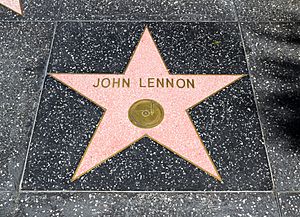
On December 8, 1980, Lennon was shot dead as he was going into his home, by a man named Mark David Chapman who was mentally ill . Even though he was ill, Chapman was still prosecuted for murder , because he killed Lennon. Chapman pled guilty to the murder the next year, and is still in prison today. He admitted later he was jealous of Lennon's fame and success, while his own life disappointed him. Chapman thought that killing Lennon would give his own life more meaning. He is always refused for parole , and is infamous (hated by many people).
Fans all over the world mourned Lennon's death. It made them feel that a special part of their lives was gone. Many met in New York's Central Park , near where Lennon and Ono lived, to say their goodbyes. Some played recordings of Lennon's music. Politicians and celebrities everywhere were sorry Lennon had died, even if they disliked him, because his music meant so much to so many people. Radio stations in the Soviet Union , where rock music was rarely allowed to be played, gave an hour over to Beatles recordings.
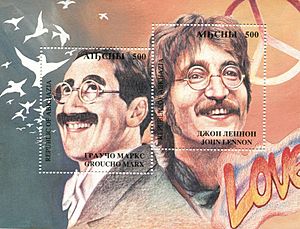
There was no funeral for Lennon, but Yoko Ono asked people everywhere to observe ten minutes of silence and prayer for him on Sunday, December 14, 1980, at 2:00 PM. At two o'clock, the music playing in Central Park stopped, and people all over the world fell silent for ten minutes. Other tributes came later, including songs by George Harrison ("All Those Years Ago"), Paul McCartney ("Here Today"), Elton John ("Empty Garden (Hey Hey Johnny)") and Queen ("Life Is Real (Song for Lennon)").
Lennon's music (with and after his Beatles years) is still played everywhere, and people are still touched by it. A series of radio programs were devoted to playing demoes of his songs. Young musicians play Lennon's records, and learn his music. Yoko Ono released an album of acoustic versions of many Lennon songs, to help musicians understand them better.
There is now a garden in Central Park in Lennon's memory called "Strawberry Fields" after one of Lennon's most popular songs, which in turn was named after a Salvation Army orphanage near his childhood home. On October 9, 1990 , on what would have been Lennon's fiftieth birthday, "Imagine" was simulcast on radio and television stations all over the world, uniting people everywhere to remember Lennon and his music.
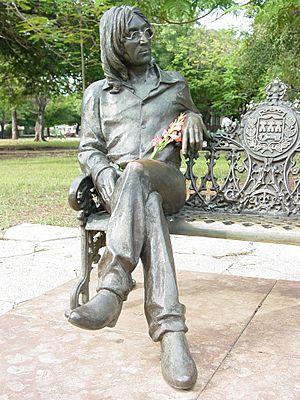
- 1981 Los Angeles , USA , City Hall–East, by Brett-Livingstone Strong.
- 2001 John Lennon Park, Havana , Cuba , by José Villa Soberón
- 2002 John Lennon Airport , Liverpool , England
- 2005 A Coruña , Spain , by Jose Luis Ribas
- 2006 Almería , Spain, by Carmen Mudarra
- 2007 Imagine Peace Tower, Reykjavík , Iceland by Ono
- 2007 Lima , Peru
- Liverpool, Cavern Pub
- "Imagine Monument", Strawberry Fields , Central Park, New York City
- Plaça De John Lennon, on Travessera de Grácia in Barcelona , Catalunya , Spain
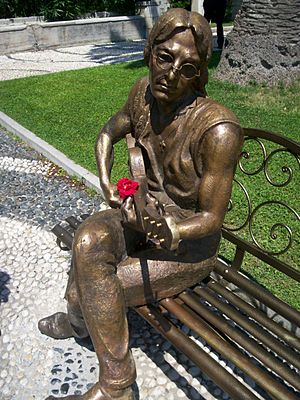
BRIT Awards :
- 1977: Outstanding contribution to the recording industry during the past 25 years.
- 1977: Best British pop group of the past 25 years.
- 1977: Best British pop album of the past 25 years (for Sgt. Pepper's Lonely Hearts Club Band ).
- 1983: Outstanding contribution to music.
- 1982 Grammy Award - 1981 Album of the Year (for Double Fantasy)
- 1982 BRIT Awards - Outstanding contribution to music.
- In 2002, a 100 Greatest Britons BBC poll voted Lennon into eighth place.
- In 2004, Rolling Stone magazine ranked Lennon number 38 on its list of "The Immortals: The Fifty Greatest Artists of All Time".
- In 2008, Rolling Stone magazine ranked Lennon number five on its list of "100 Greatest Singers of All Time".
Discography

- Unfinished Music No.1: Two Virgins (with Yoko Ono ) (1968)
- Unfinished Music No.2: Life with the Lions (with Yoko Ono ) (1969)
- Wedding Album (with Yoko Ono ) (1969)
- Live Peace In Toronto (with Plastic Ono Band ) (1969)
- John Lennon/Plastic Ono Band (1970)
- Imagine (1971)
- Some Time in New York City (with Yoko Ono ) (1972)
- Mind Games (1973)
- Walls and Bridges (1974)
- Rock 'n' Roll (1975)
- Double Fantasy (with Yoko Ono ) (1980)
- Milk and Honey (with Yoko Ono ) (1984)
- Live In New York City (Recorded live in 1972) (1986)
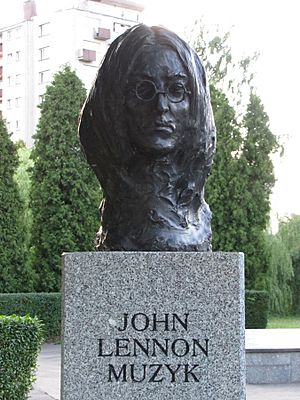
Lennon's home at 251 Menlove Avenue

Ringo Starr , George Harrison , Lennon and Paul McCartney in 1963

Lennon in 1964

McCartney, Harrison and Lennon, 1964
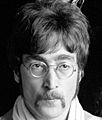
Lennon in 1967
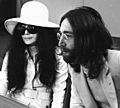
Yoko Ono and Lennon in March 1969

Advertisement for "Imagine" from Billboard , 18 September 1971

Publicity photo of Lennon and host Tom Snyder from the television programme Tomorrow . Aired in 1975, this was the last television interview Lennon gave before his death in 1980.

Wintertime at Strawberry Fields in Central Park with the Dakota in the background

Cynthia Lennon at the unveiling of the John Lennon Peace Monument in Liverpool in October 2010

Brian Epstein in 1965

Julian Lennon at the unveiling of the John Lennon Peace Monument
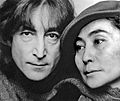
Lennon and Ono in 1980 by Jack Mitchell

May Pang in 1983

Sean Lennon at a Free Tibet event in 1998

Lennon (left) and the rest of the Beatles arriving in New York City in 1964
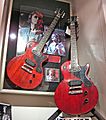
Lennon's Les Paul Jr.
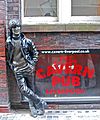
Statue of Lennon outside The Cavern Club , Liverpool

Street art image of Lennon on the Lennon Wall in Prague .
- This page was last modified on 16 October 2023, at 16:53. Suggest an edit .

Past Factory
John Lennon's Son Believes His Dad Sent Him A Profound Message From The Afterlife
Posted: May 23, 2024 | Last updated: May 23, 2024
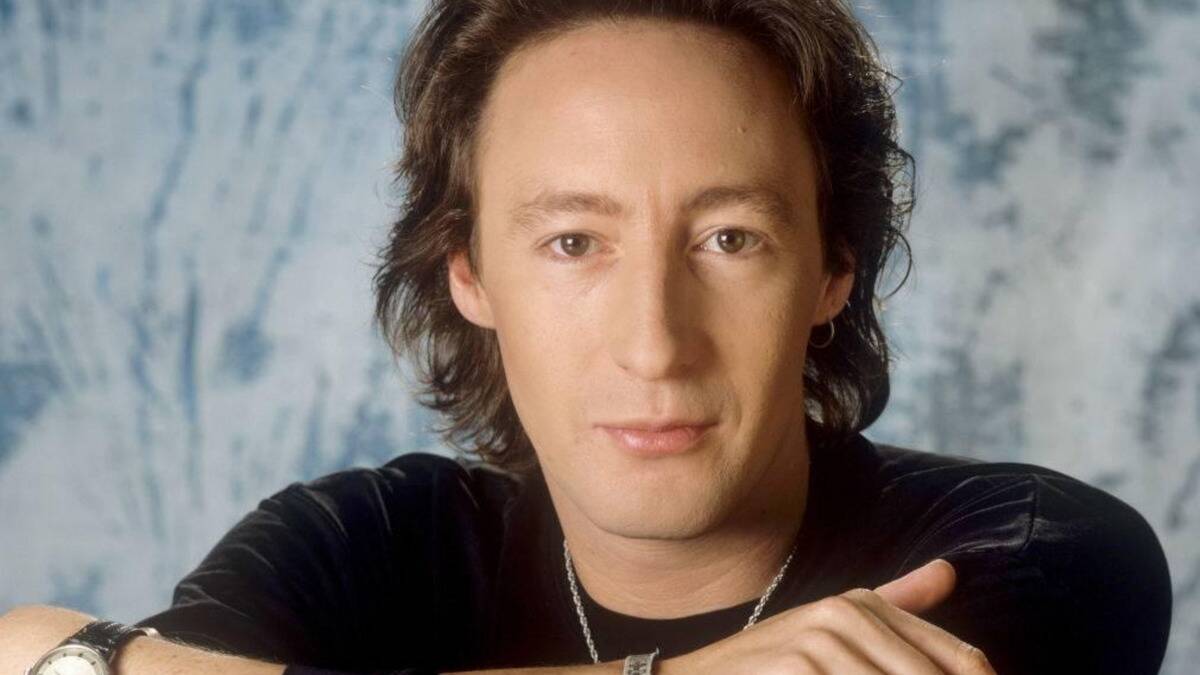
When a loved one is taken from us, the pain of loss can seem unbearable. For Julian Lennon, the situation was compounded by the fact that his father was someone who had made such an immense impact on popular culture. But in this bitter tragedy came a beautiful moment of clarity and peace when John Lennon sent his son one last meaningful message that changed Julian's life for good.
Read on through to find out how their strained relationship transformed into something so powerful.
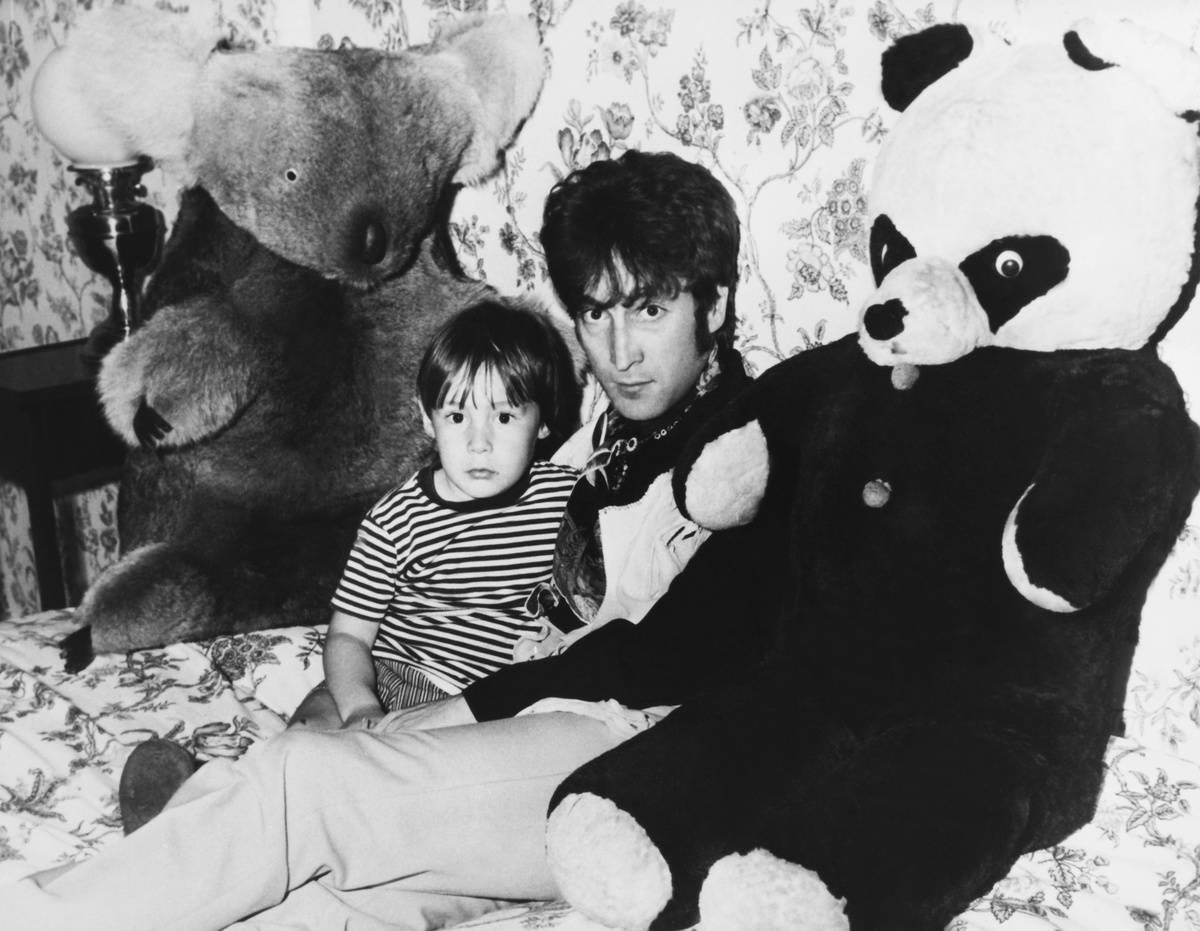
Who Is Julian Lennon?
John Lennon had a son before Sean, Julian. Born in 1963 in Liverpool, he was named after John's mother, Julia, who passed away a few years earlier.
Though his father wrote many songs about him with The Beatles, Julian felt distant from John at times due to their complicated relationship. Despite this, he is still an important figure in the Lennon family and has received media attention since a young age.
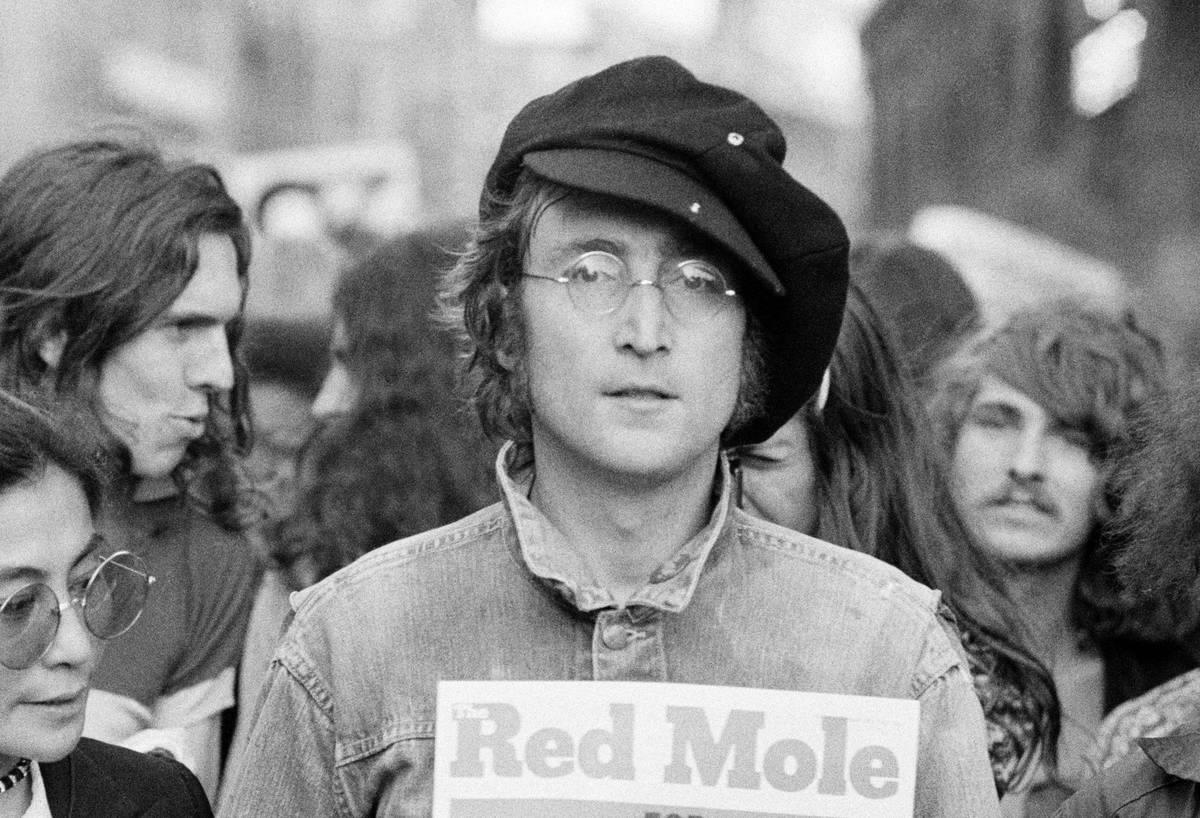
The Media Erupted Over John's "Secret Wife And Baby"
Julian was born in 1969, six years after The Beatles had formed. His birth coincided with the band's growing fame. That same year, they released Please Please Me - a huge success that made them famous worldwide.
When Julian was just one-year-old, John Lennon's life became headline news due to his "secret wife and baby."
Read More: History Of An American Icon: Facts About Popeye The Sailor Man
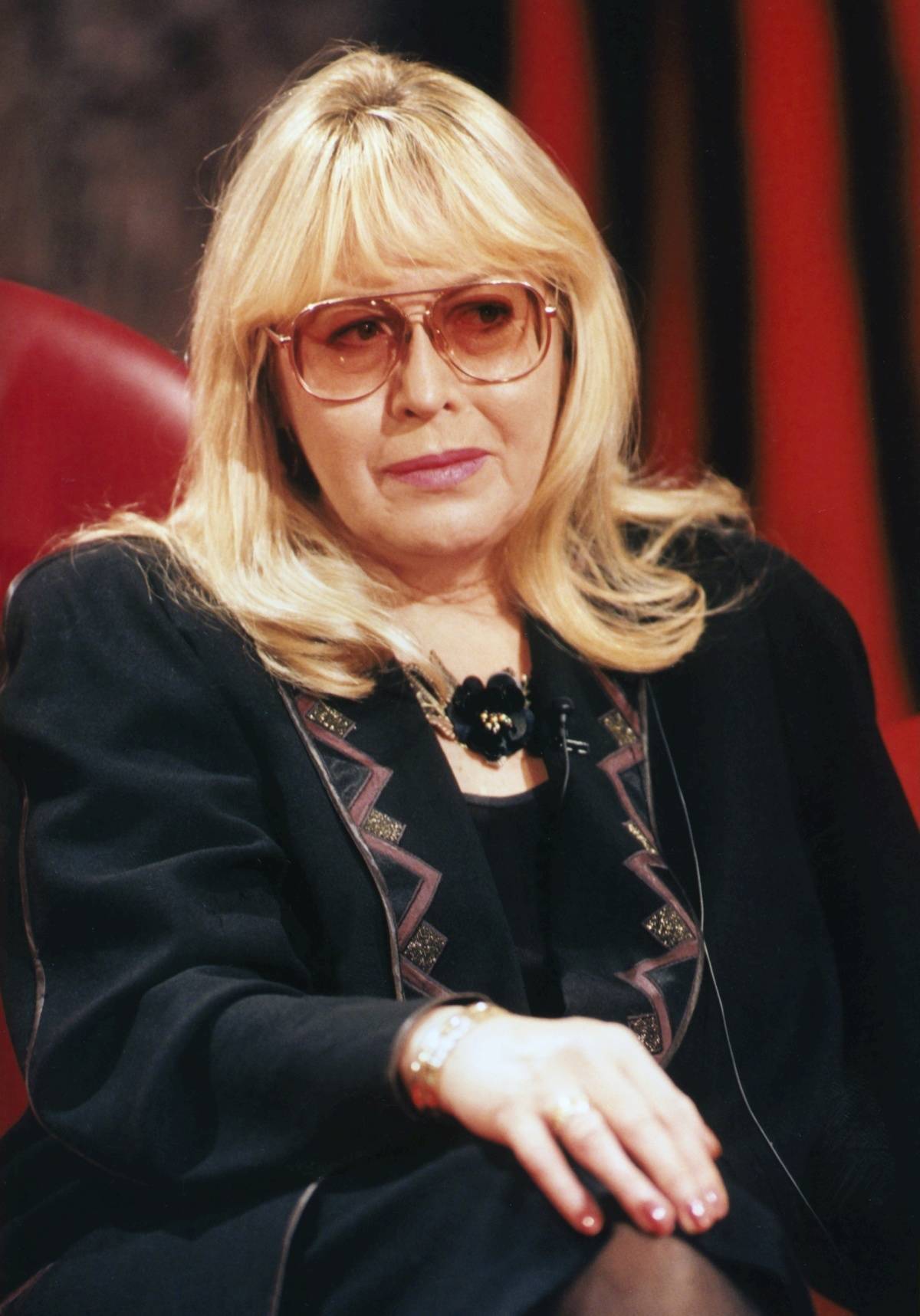
Cynthia Raised Julian Mostly On Her Own
Cynthia Lennon worked hard to raise Julian and protect him from media attention. As a result, Julian felt removed from his father's presence in the iconic band.
In 1966 they went on a skiing trip together as a family, yet it was overwhelmed by followers who wouldn't leave them alone.

Julian Inspired His Father's Work
In 1967, Julian was on the set of The Beatles' Magical Mystery Tour film. Around the same time, he created a watercolor painting of his friend Lucy in nursery school surrounded by stars - this inspired John Lennon to write "Lucy In The Sky With Diamonds."
As a token of appreciation, Lennon wrote and recorded "Good Night" for Julian featuring Ringo Starr on lead vocals which closed out The Beatles' White Album.
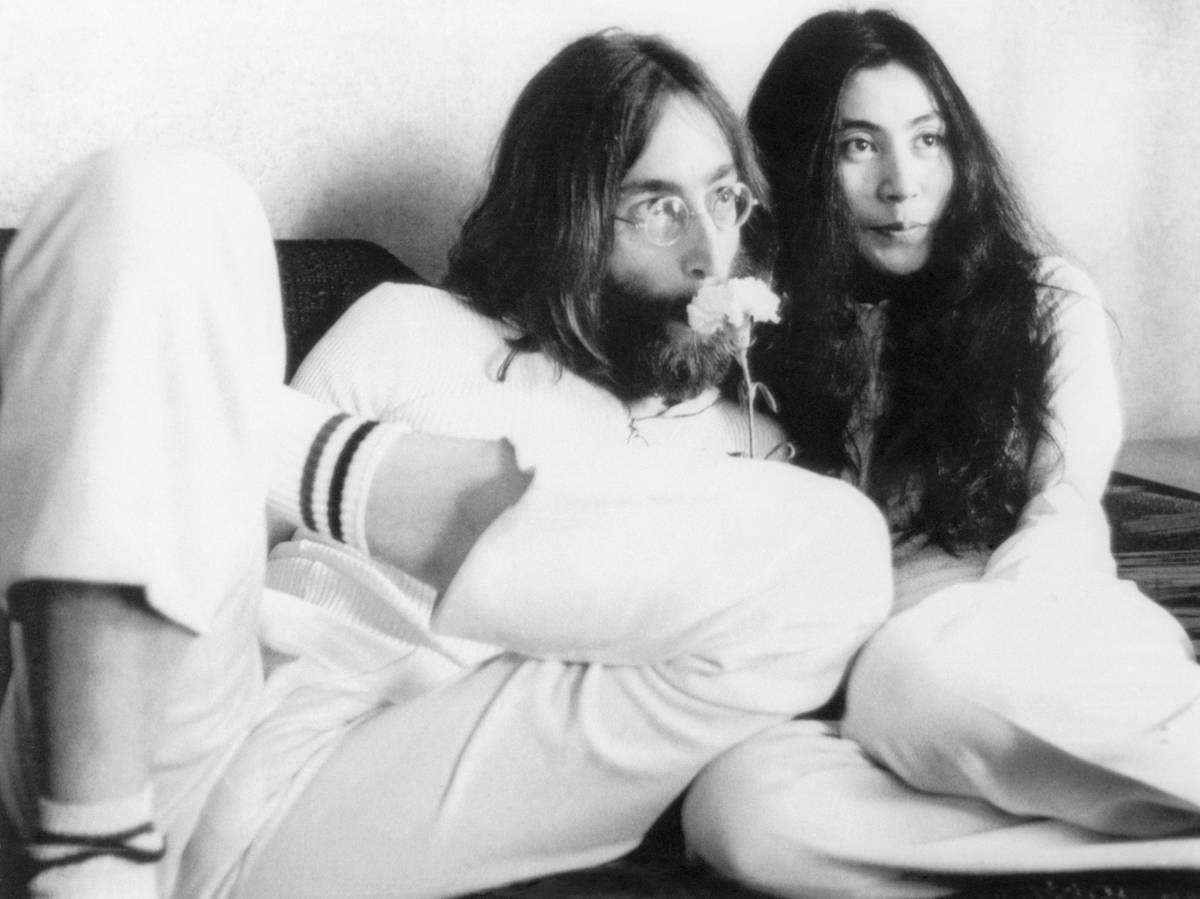
More Distance Between Julian And His Father
At five, Julian's parents divorced and his dad John began a relationship with Yoko. In 1969 they married, which caused tension between The Beatles.
They split shortly after, then John focused on his music releasing an album in 1970. He and Yoko moved to New York the next year so Julian was further away from his dad.
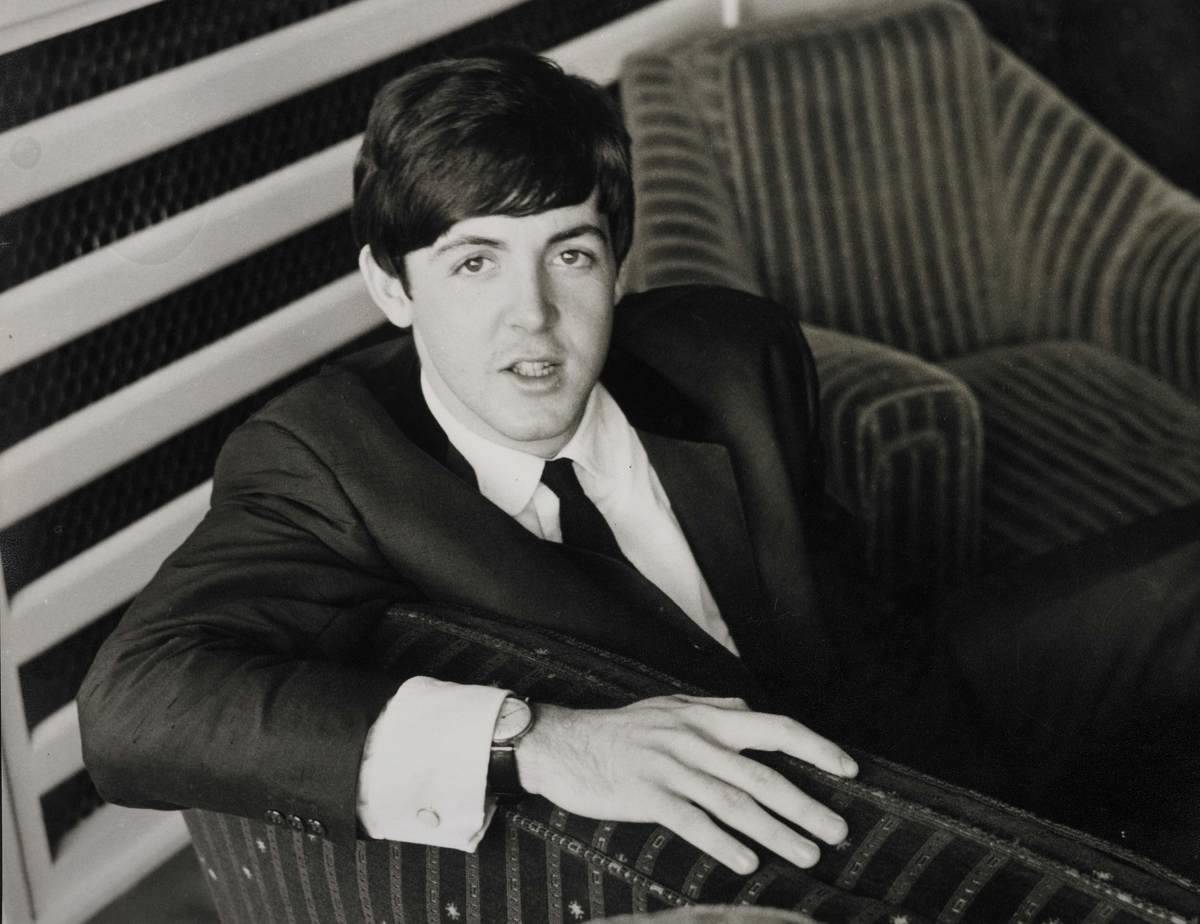
Julian Bonded With Paul McCartney
Julian had mixed feelings about his dad as he got older. He recalled spending more with Paul than John, which was highlighted when Paul wrote the song "Hey Jules" to comfort him during his parents' divorce.
This was later changed to "Hey Jude" as it suited better melody-wise.
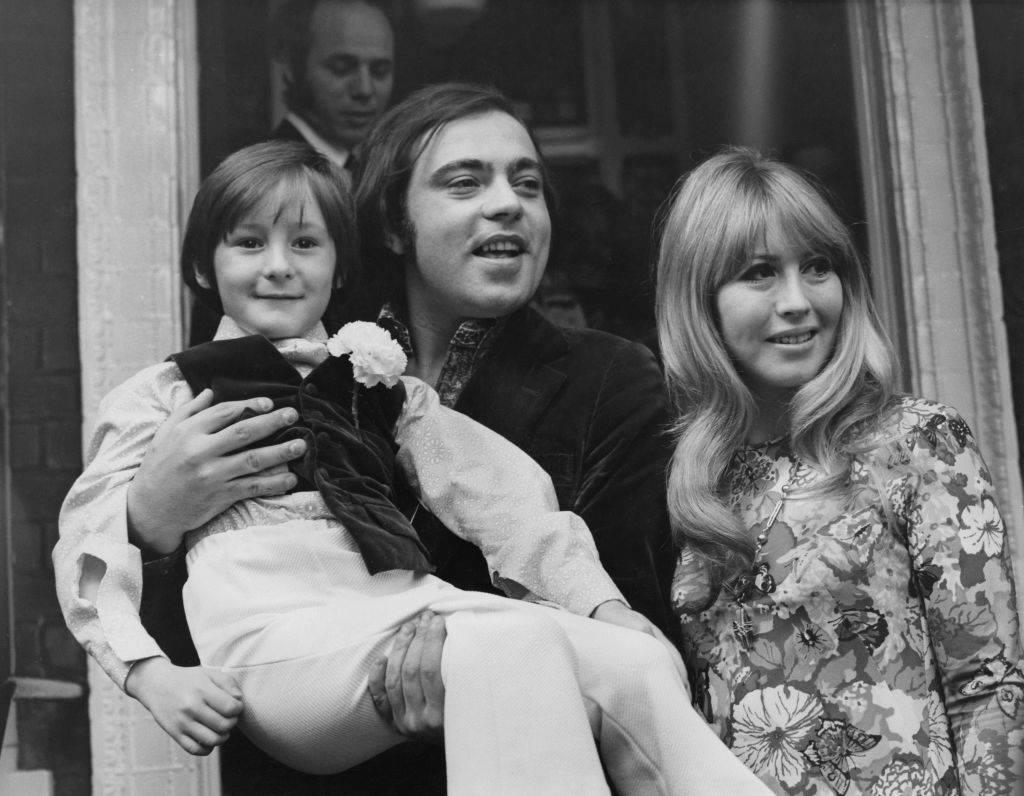
A New Father Figure For Julian
In addition to Paul McCartney, Julian gained a new father figure when his mother remarried in 1970, a year after John married Yoko Ono. She wed Roberto Bassanini, who she'd met while on a trip to Italy with Julian.
Cynthia and Roberto were only married for a few years, after which Julian reunited with his father and enjoyed some of their best years as father and son. In 1978, she had another short-lived marriage to engineer John Twist.

John's New Relationship Reconnected Him To Julian
When Lennon and Yoko separated in 1973, John developed a romantic relationship with their personal assistant, May Pang. May encouraged John to re-connect with Julian, who he hadn't seen in two years.
In an interview with The Times, Julian described his time with May Pang and John as "the happiest times" he had with his father. During this time, Julian made his musical debut at the age of eleven when his father unexpectedly used Julian's drum recording in the song "Ya-Ya" on Walls and Bridges.
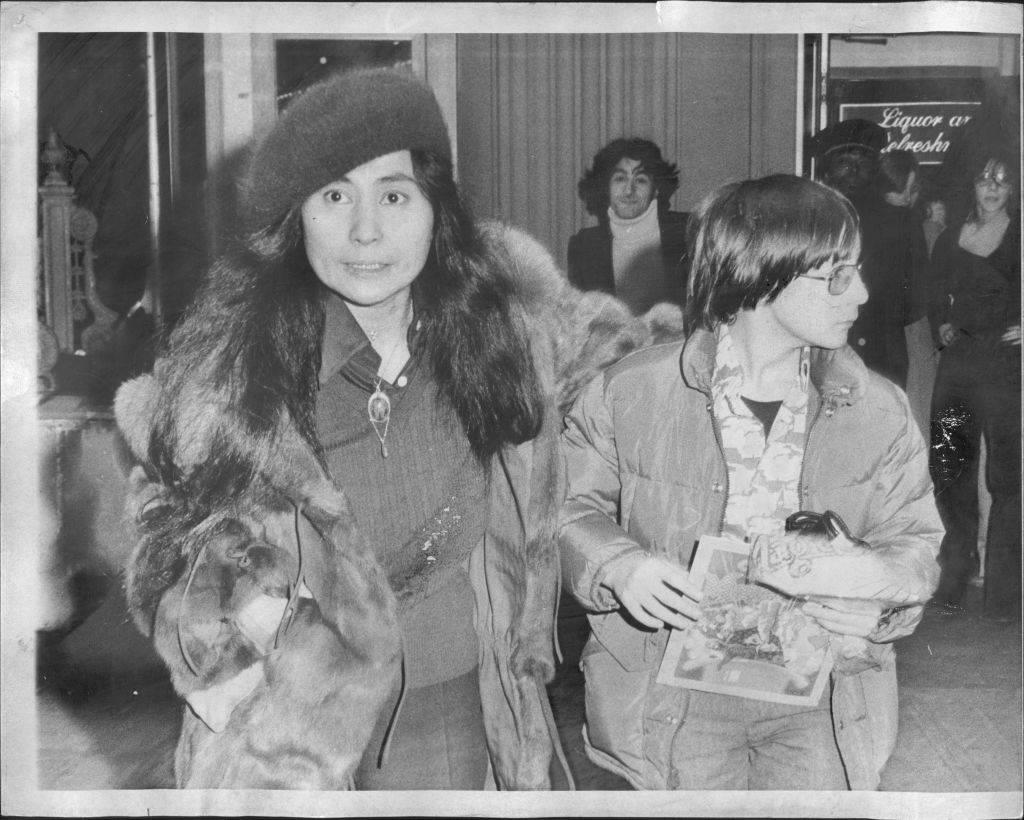
Reconciliation With Yoko Ono
At the start of 1975, John Lennon agreed to meet with Yoko Ono after more than a year of separation. The two reconciled and Yoko gave birth to their son, Sean Lennon, later on that year.
In a 1999 interview with Dini Petty, Julian admitted that he felt his father was a hypocrite. He said, "Dad could talk about peace and love out loud to the world but he could never show it to the people who supposedly meant the most to him: his wife and son."
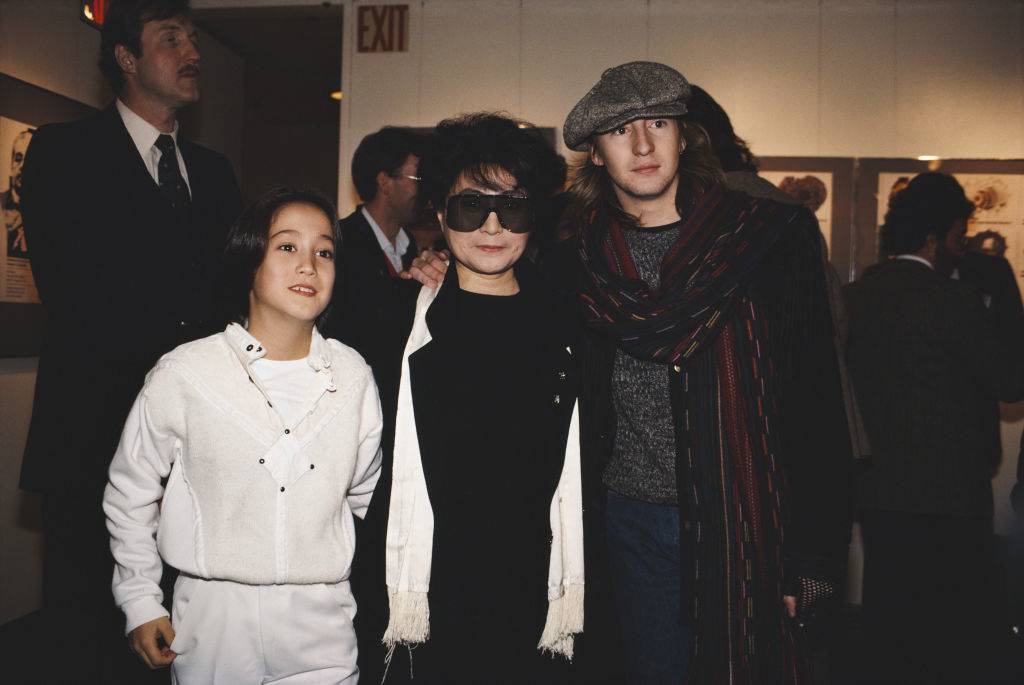
John Lennon's Untimely Passing
In December of 1980, John Lennon lost his life to Mark David Chapman while on his way to his Manhattan apartment. A Strawberry Fields memorial was later created in Central Park to honor the late musician.
John was and is still lived on by his two sons, who were five and 17 at the time of his passing. Earlier that year, John Lennon had mentioned in an interview that he loves both of his sons equally and that Julian, "belongs to me, and he always will."

Following In His Father's Footsteps
Shortly after his father passed, Julian followed in his footsteps by putting out his first album, Valotte . Julian told Rock Beat that one of the album's songs, "Well I Don't Know," was "about looking for signs of the afterlife from Dad."
He'd inherited his father's songwriting ability and his voice was regarded by music critic Robert Christgau as being eerily similar to that of John. The album earned Julian a Grammy nomination for Best New Artist in 1985.
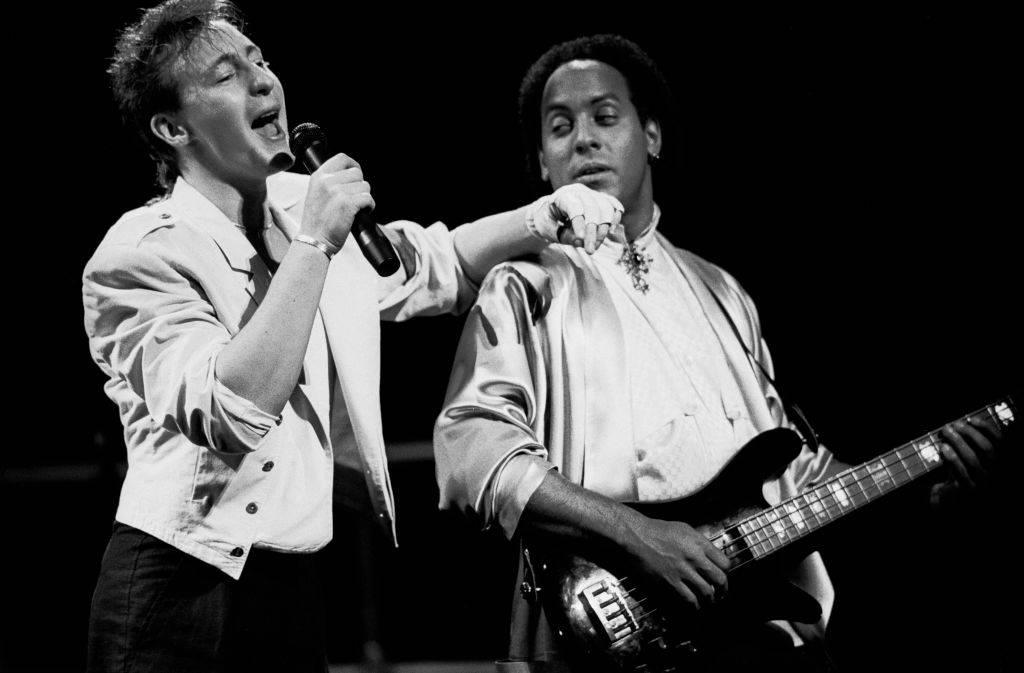
The Rise Of Julian's Music Career
Julian's next album, The Secret Value of Daydreaming , reached number 32 on the Billboard 200. It also featured the single "Stick Around," which was Julian's first song to reach number 1 on the US Album Rock Tracks.
His second single to top the Album Rock Tracks was "Now You're In Heaven," which peaked at number 5 in Australia. His single "Saltwater" on his 1991 album topped Australian charts for a month and featured former Beatles member George Harrison on the guitar.
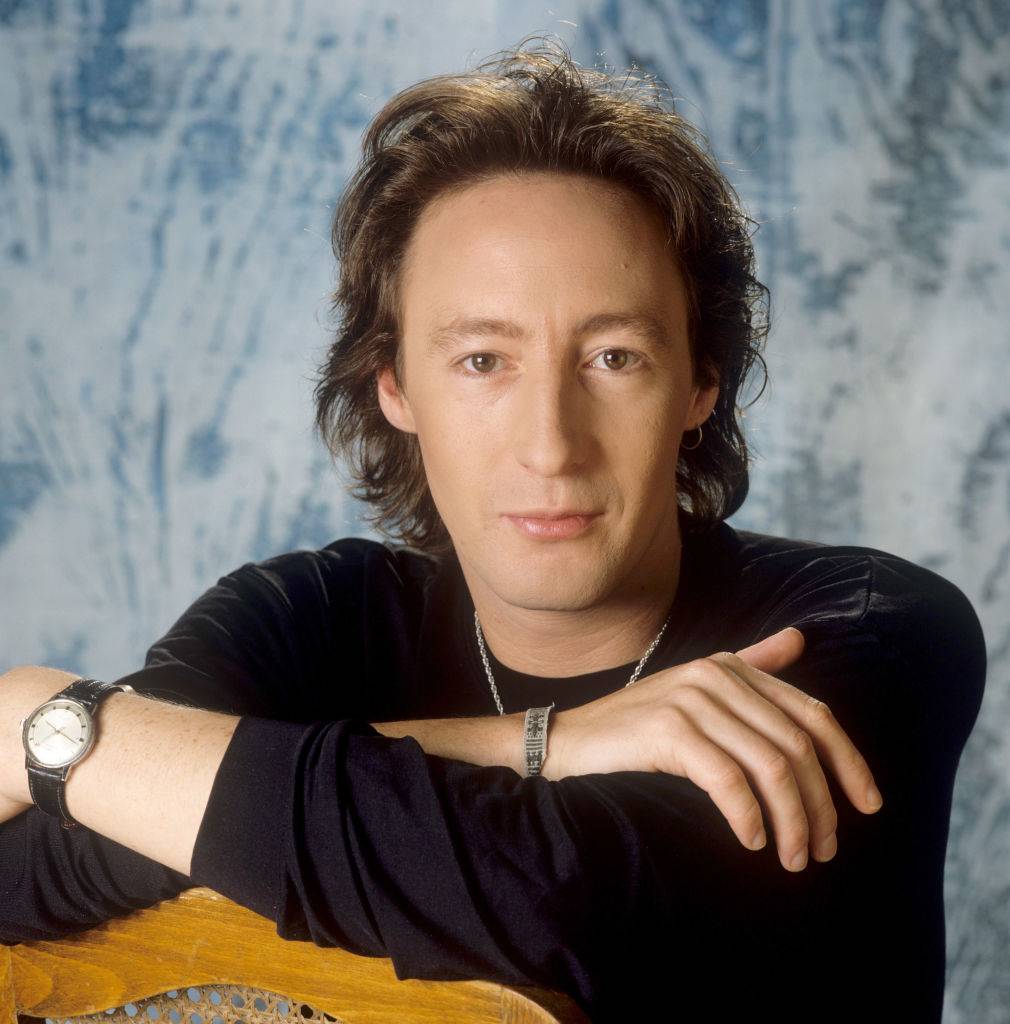
Something Incredible Happened While On Tour In Australia
The track "Saltwater" was famous in Australia for a reason, as it was an environmentally conscious ballad that transcended the decade. Julian's touching lyrics attracted the attention of aboriginal leaders, who met with the musician while he was on tour.
They asked Julian if he would use his fame to help bring them awareness. The elder of the tribe known as Mirning was a woman who handed him a gift. When Julian took it, he could hardly believe his eyes.
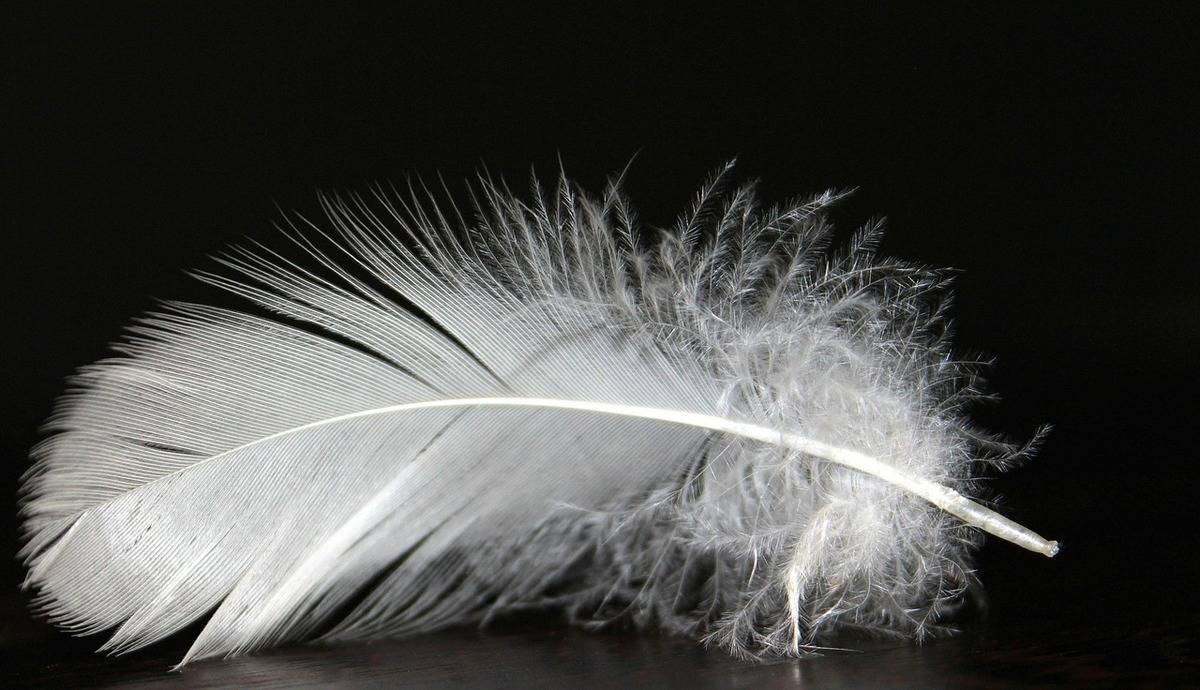
A White Feather Full Of Meaning
The aboriginal leader had handed Julian a white feather. He later told Today that John Lennon had once told him that a white feather would be his way of communicating to his son that we were all going to be alright.
His plea from his first album's track "Well I Don't Know" for his father to send him a sign seemed to have been answered. Julian realized at that moment that he needed to do something meaningful with his career.
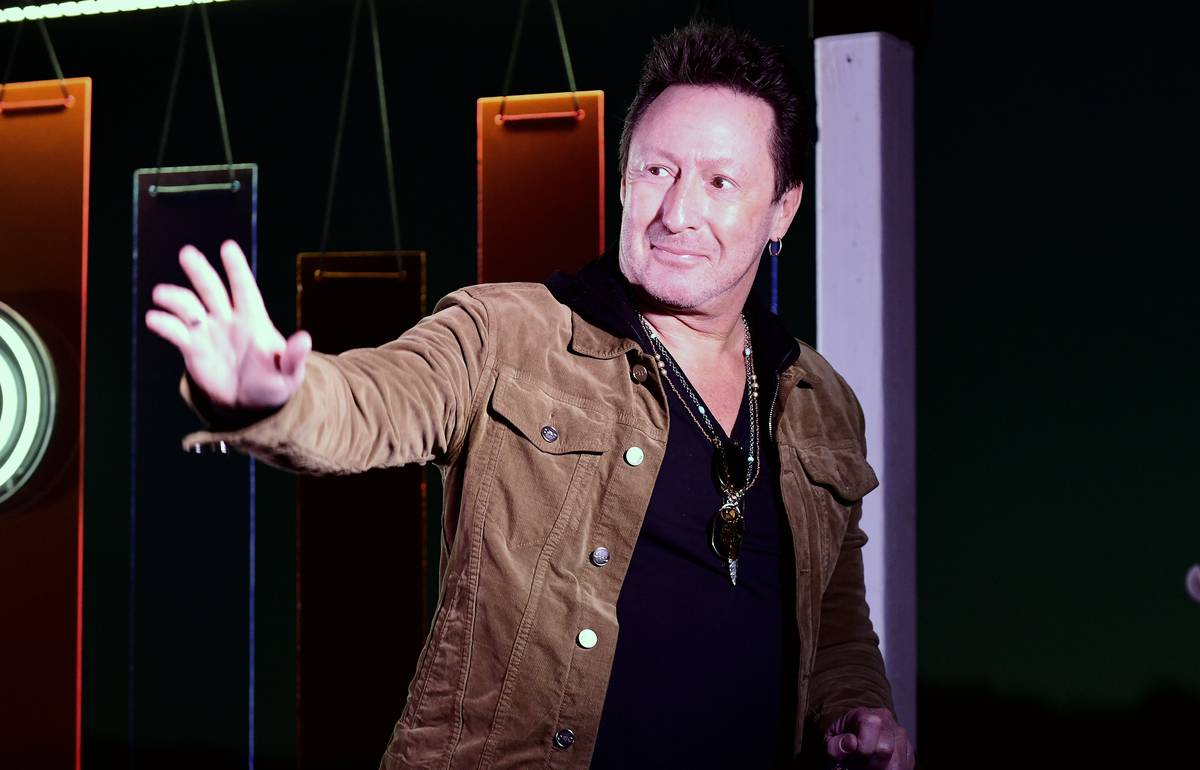
Staying True To His Word
Julian stayed true to his promise that he would help the Aboriginal Australians. In 2006, he produced and narrated the film Whaledreamers , which illuminates an aboriginal tribe's meaningful relationship with Australian whales that are at risk of extinction.
The documentary outlines various environmental issues and was shown at the 2007 Cannes Film Festival. It won several awards, including Best Film by the Byron Bay Film Festival and Best Music/Song by the Tahoe/Reno Int'l Film Festival, and raised funds for Greenpeace and Elcho Island Elder Burmulla.
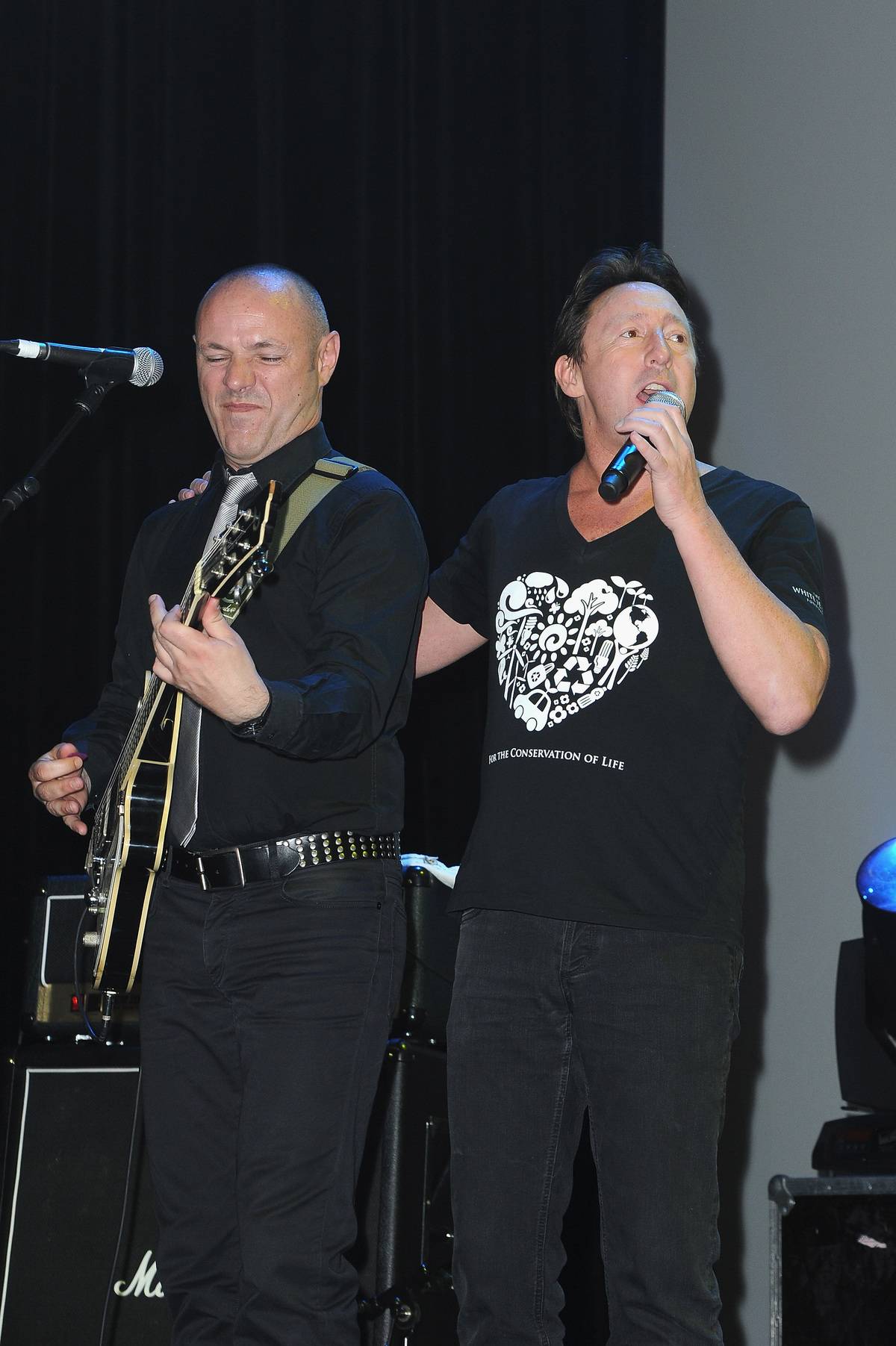
Julian's White Feather Foundation
Julian didn't just stop at highlighting the issues plaguing the aboriginals; that was just the beginning. In 2009, he started the White Feather Foundation, named after the encounter that he considers a sign from his late father.
The organization sets out to raise funds for both environmental and humanitarian issues and to bring attention to those who are setting out to make a difference. To Julian, the white feather represents peace on account of its influence in his life.
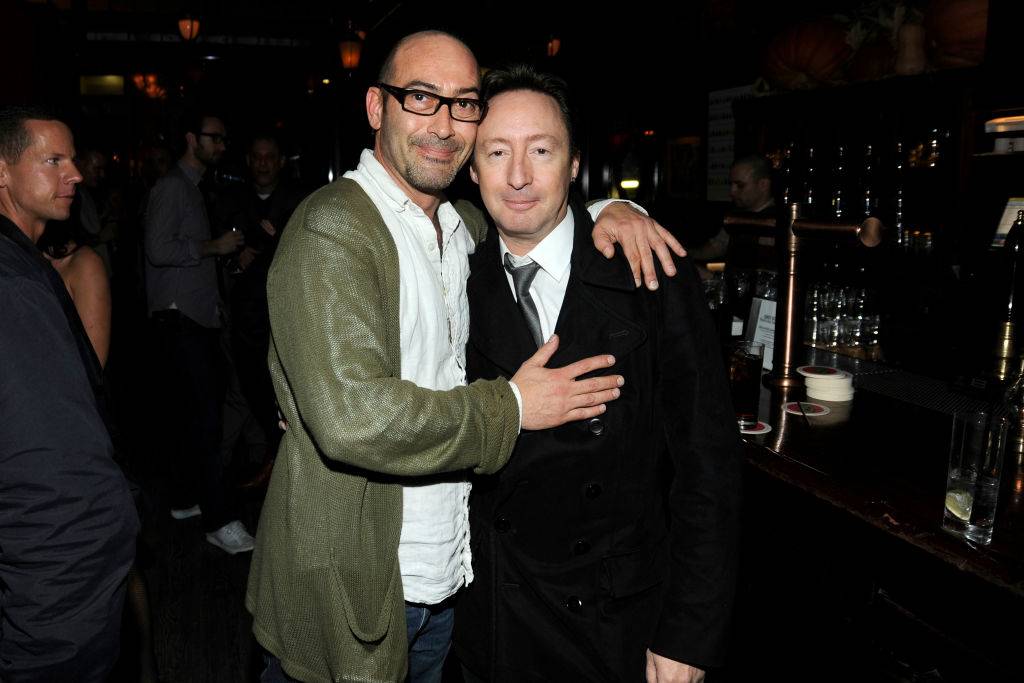
Julian Was Inspired By An Old Friend
The same year that Julian founded the White Feather Foundation, he also raised funds for an illness that took his late friend's life. He partnered with Meagher and Birch to create the revolution, LLC, through which he released the EP "Lucy."
The song was a tribute to Lucy Vodden, the little girl he painted in nursery school that inspired John's song "Lucy in the Sky with Diamonds." Half of the proceeds from "Lucy" were to be donated to Lupus research since that was the disease that took her life.
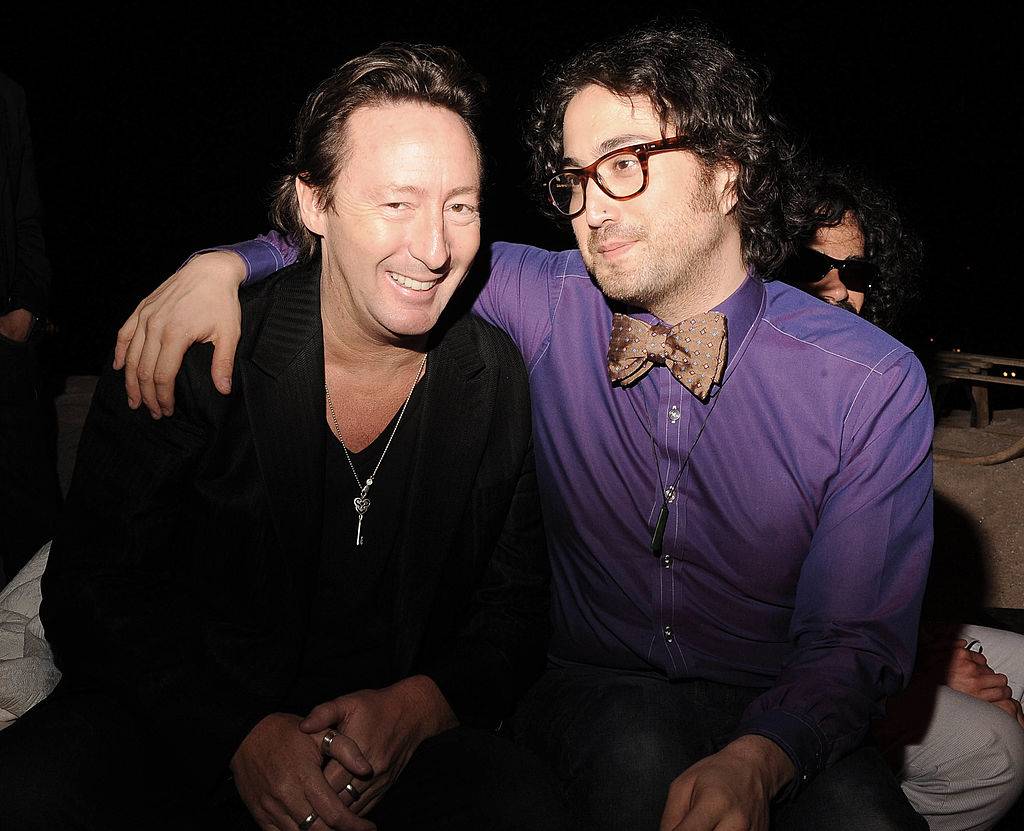
Sean And Julian's Relationship Has Blossomed
After all Sean and Julian went through, they came out on the other side as strong brothers and allies in the music industry. In 2011, Julian told The Express that he loves his brother Sean deeply, and that's why he needed to "get over" the past.
Sean stated in 2010 that his big brother is the reason he started playing music. Interestingly, Sean's music is what prompted Julian to dive into photography, a habit that flourished after he photographed Sean's music tour in 2007.

Honoring His Father In The Name Of Peace
Also in 2010, Julian joined his mother Cynthia in the unveiling of the John Lennon Peace Monument in Liverpool. The beautiful, 18-foot sculpture is a colorful sphere covered with music notes and peace signs and topped with silver birds.
It reads "Peace On Earth For The Conservation Of Life In Honour of John Lennon 1940-1980." Julian said at the ceremony, "We come here with our hearts to honor Dad and pray for peace and say thank you to everybody who is celebrating today."
Read More: Facts About The Ancient Roman Empire
More for You
Stephen Hawking once gave a simple answer as to whether there was a God
USPS wants people to install new jumbo mailboxes. Here's why.
‘Survivor' Winners Through the Years: Where Are They Now?
Wash Your Hands Immediately After Touching These 10 Things
Sondra Locke, Clint Eastwood and the tragic disappearance of a Hollywood trailblazer
The 18 Best High-Waisted Bikinis To Make You Feel Confident and Chic
Yellowstone coyote not alone; can you spot the other mammal?
Air Force raises maximum amount for retention bonuses to $180,000
14 TV Series That Are Worth Cancelling Plans For
Mechanic shares photo of unexpected object that punctured vehicle's tire: 'This will be increasingly common'
Why Was The Beechcraft Bonanza Nicknamed The 'Doctor Killer'?
Taylor Swift fixes wardrobe malfunction during 'Eras Tour'
18 Things That Will Happen if 70 Becomes the New Retirement Age in the US
George Conway predicts Trump won’t be unanimously acquitted in hush money trial
Americans are finally catching on to Costco's tricks — here are 15 to watch out for so you don't get fleeced on your next trip
Billy Price retires from the NFL following dramatic health crisis
Banish Flat Tires From Your Wheelbarrow With This Genius Hack
The 50 best Netflix original series of all time, according to fans
6 Hybrid Vehicles To Stay Away From Buying
Factory worker wins $310 million Powerball during lunch break and quits job immediately

IMAGES
VIDEO
COMMENTS
John Lennon (born October 9, 1940, Liverpool, England—died December 8, 1980, New York, New York, U.S.) was a leader or coleader of the British rock group the Beatles, author and graphic artist, solo recording artist, and collaborator with Yoko Ono on recordings and other art projects. John Lennon and Yoko Ono holding their marriage ...
Learn about John Lennon, the legendary singer-songwriter who co-founded the Beatles and became a cultural icon. Explore his early life, musical career, marriage, activism and tragic assassination.
John Winston Ono Lennon [nb 1] (born John Winston Lennon; 9 October 1940 - 8 December 1980) was an English singer, songwriter and musician. He gained worldwide fame as the founder, co-lead vocalist and rhythm guitarist of the Beatles. His work included music, writing, drawings and film. His songwriting partnership with Paul McCartney remains ...
God bless America. Thank you, Jesus. John Winston Lennon was born in Liverpool on 9 October 1940. He was a founder member of The Beatles, and their singer, songwriter and guitarist. Lennon was murdered in New York City on 8 December 1980.
Learn about John Lennon's childhood, Beatles career, solo work and activism in this brief biography. Discover his musical influences, controversies, relationships and legacy.
John Lennon. Actor: A Hard Day's Night. John Winston (later Ono) Lennon was born on October 9, 1940, in Liverpool, England, to Julia Lennon (née Stanley) and Alfred Lennon, a merchant seaman. He was raised by his mother's older sister Mimi Smith. In the mid-1950s, he formed his first band, The Quarrymen (after Quarry Bank High School, which he attended) who, with the addition of Paul ...
JOHN LENNON. John Lennon is arguably the greatest songwriter of his generation. As founder and leader of The Beatles and also as a solo artist, Lennon has won seven GRAMMY® Awards, including two Lifetime Achievement Awards, Five BRIT Awards including two Special Awards for Outstanding Contribution to Music, 21 NME Awards, 15 Ivor Novellos and an Oscar (Academy Award).
John Lennon, (born Oct. 9, 1940, Liverpool, Merseyside, Eng.—died Dec. 8, 1980, New York, N.Y., U.S.), British singer and songwriter.He wanted to be a sailor like his father but became a musician after hearing Elvis Presley's recordings. In 1957 he formed the band that became the Beatles, and in the 1960s he achieved enormous success performing with the group and writing songs with Paul ...
John Lennon [1] Singer, songwriter, guitarist Beatlemania [2] ... Coleman, Ray, Lennon: The Definitive Biography, McGraw-Hill, 1984, revised ... 1990, Lennon's life was celebrated in a brief ceremony at the United Nations in N.Y, after which his song "Imagine" was broadcast on more than a thousand radio stations in more than 130 countries ...
Biography. John Winston Lennon was born on 9 October 1940 at Liverpool Women's Hospital in Liverpool. He was the son of Alfred Lennon and Julia Lennon. He started the Beatles in his hometown of Liverpool, with Paul McCartney and George Harrison.After Ringo Starr joined the band, they started to be very successful. People were excited by their music, and their live performances always pleased ...
John Lennon was one of the world's most famous musicians, with a solo career that included songs like 'Imagine' and 'Jealous Guy'. Born in Liverpool in 1940 and taken away from us so ...
Short Bio » Rock Singer » John Lennon. John Lennon. October 9, 2022. John Winston Ono Lennon, MBE was an English singer and songwriter who co-founded the Beatles (1960-70), the most commercially successful band in the history of popular music. Lennon was born in war-time England, on 9 October 1940 at Liverpool Maternity Hospital, to Julia ...
Learn about John Lennon's life, from his childhood in Liverpool to his musical career with the Beatles and as a solo artist. Discover his relationship with Yoko Ono, his political activism, his struggles with drugs and his tragic death.
A short biography of John Lennon, from his superstardom with the Beatles to his fame as a solo artist and social activist, to his marriage to Yoko Ono. In 19...
John Lennon became famous as part of the 1960s pop group the Beatles . After their split he enjoyed a successful solo career, but it was cut short by his early death in 1980.
As several Lennon biographies will tell you, the five-year-old John went, by arrangement, to live with his aunt Mimi in a house nearby called Mendips, while his mother started another family with ...
He is the author of the bestselling biography John Lennon: The Life and the history of The Beatles Shout!: The Beatles in Their Generation. Norman has also published biographies of Buddy Holly, the Rolling Stones, and Elton John, as well as six works of fiction and two plays, The Man That Got Away and Words of Love. He lives in London.
The musician died on December 8, 1980, after being shot by Mark David Chapman. John Lennon left behind an indelible legacy of music that evoked a range of emotions. Songs like "Real Love" (with ...
Despite early criticism, the former Beatle's anthem for peace has withstood the test of time. "Now I understand what you have to do. Put your political message across with a little honey." So said ...
This biography tells the complete story of John Lennon's life, including the controversial influence of his music, art, and philosophy upon the world.John Lennon was a singer, songwriter, activist, artist, and writer whose life and work left an indelible mark on rock music and the world. Lennon first became famous as the founding member of The Beatles, and his songwriting partnership with ...
ISBN. 978-0688047214. The Lives of John Lennon is a 1988 biography of musician John Lennon by American author Albert Goldman. The book is a product of several years of research and hundreds of interviews with Lennon's friends, acquaintances, servants and musicians. It is best known for its criticism and generally negative representation of the ...
John Winston Ono Lennon (9 October 1940 - 8 December 1980) was an English singer, songwriter and artist who rose to worldwide fame as the founder of the rock band the Beatles.After the Beatles stopped making records in 1970, he lived in the United States with his wife Yoko Ono, and continued his music career up until his death in 1980.
John Lennon had a son before Sean, Julian. Born in 1963 in Liverpool, he was named after John's mother, Julia, who passed away a few years earlier.